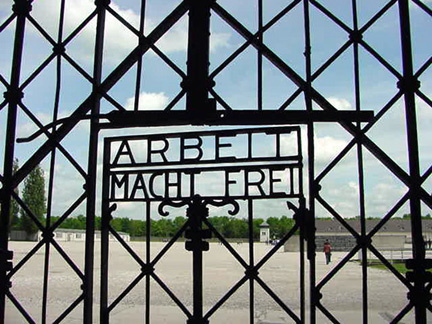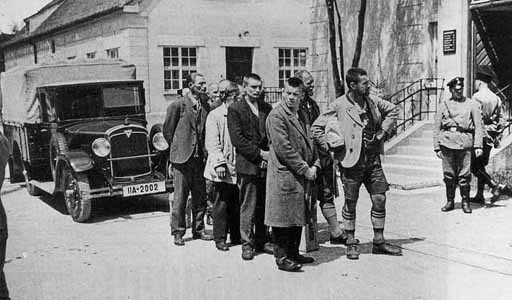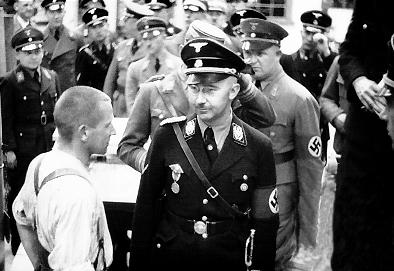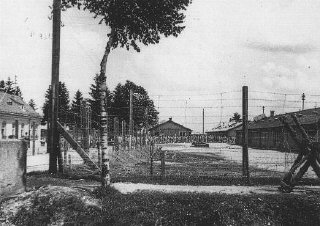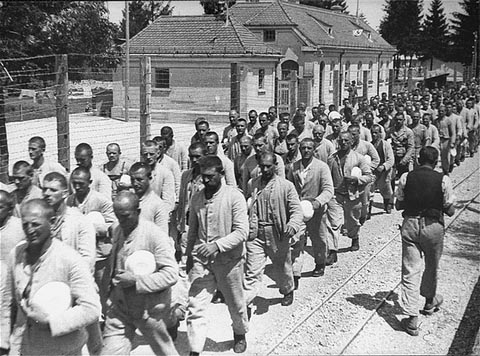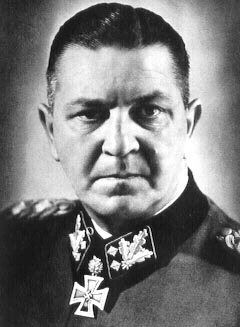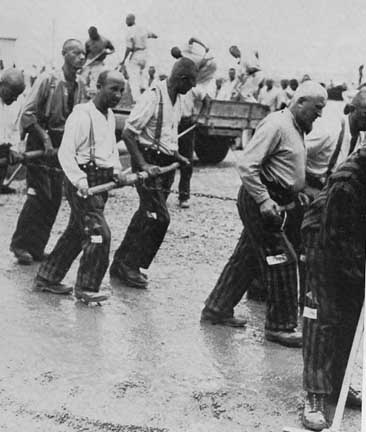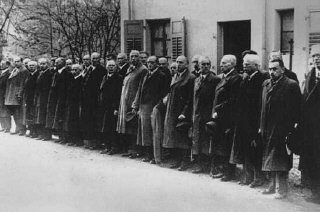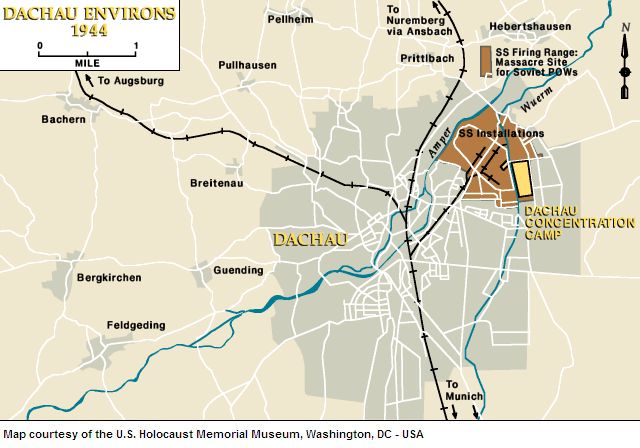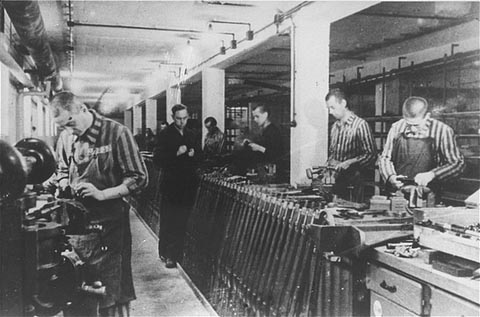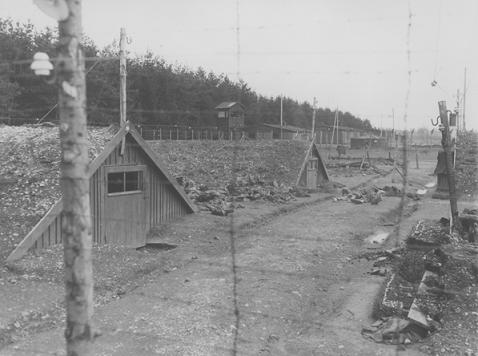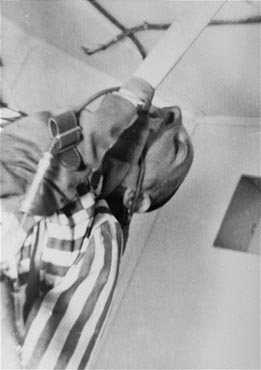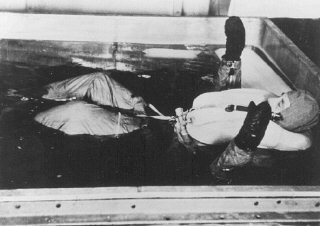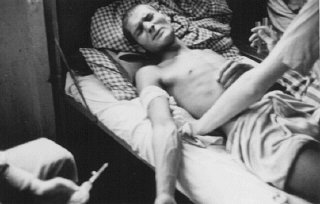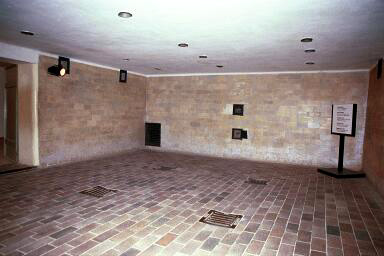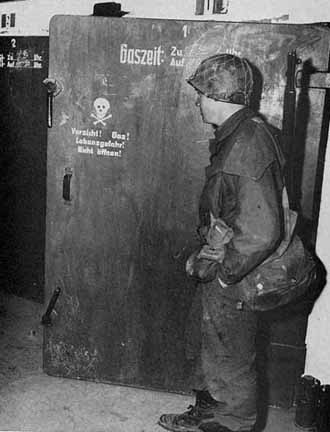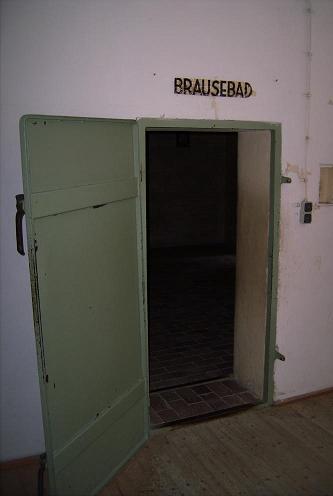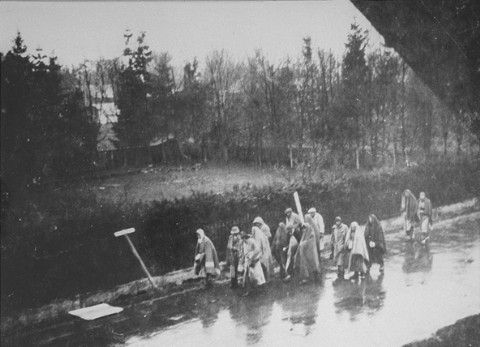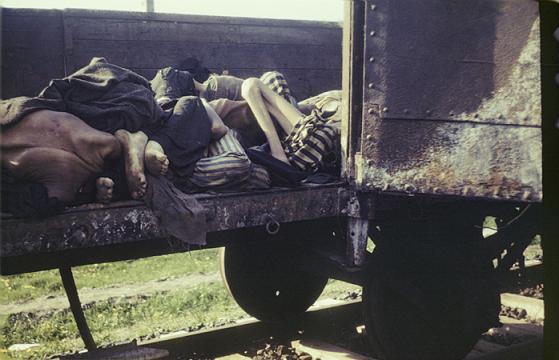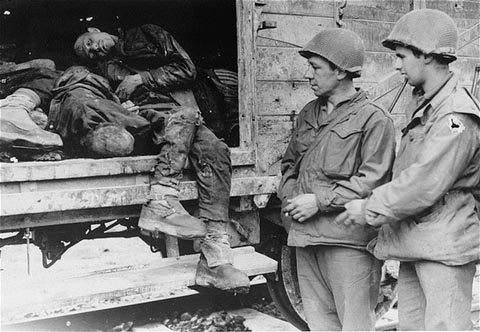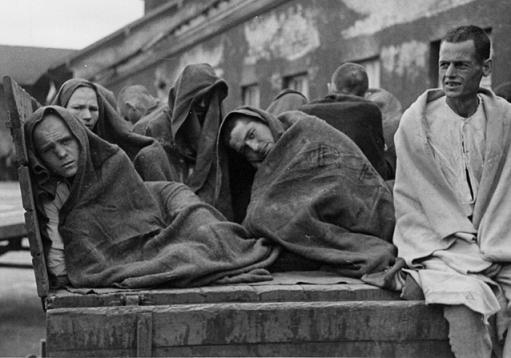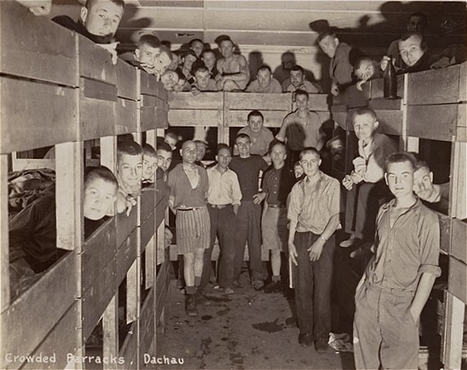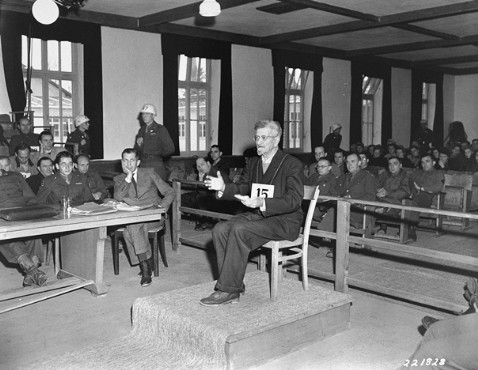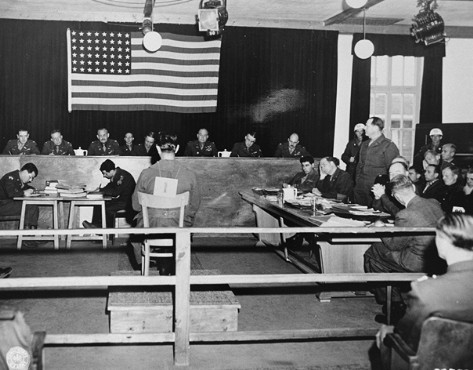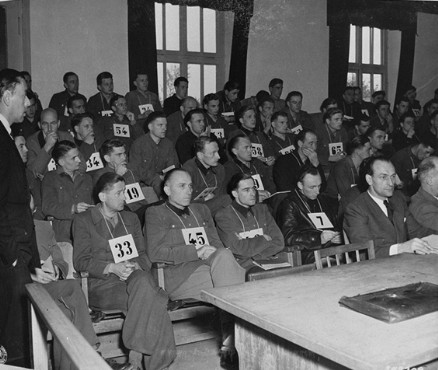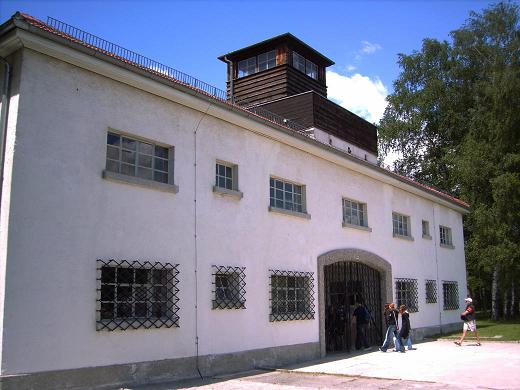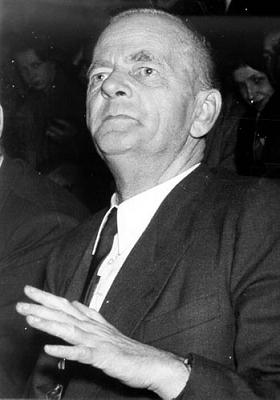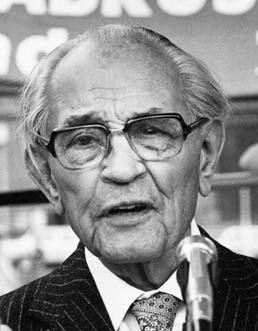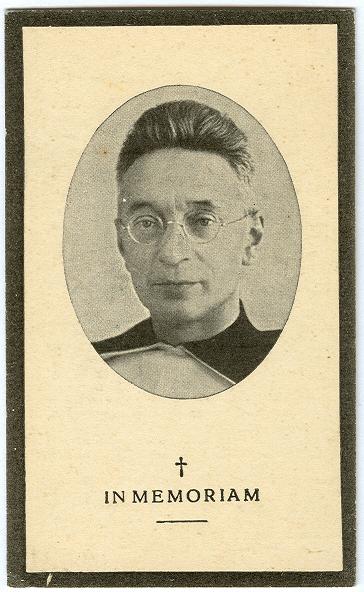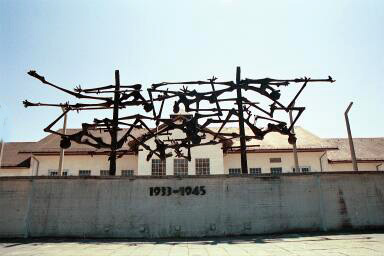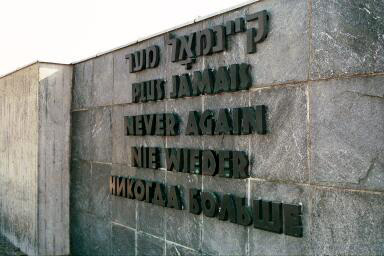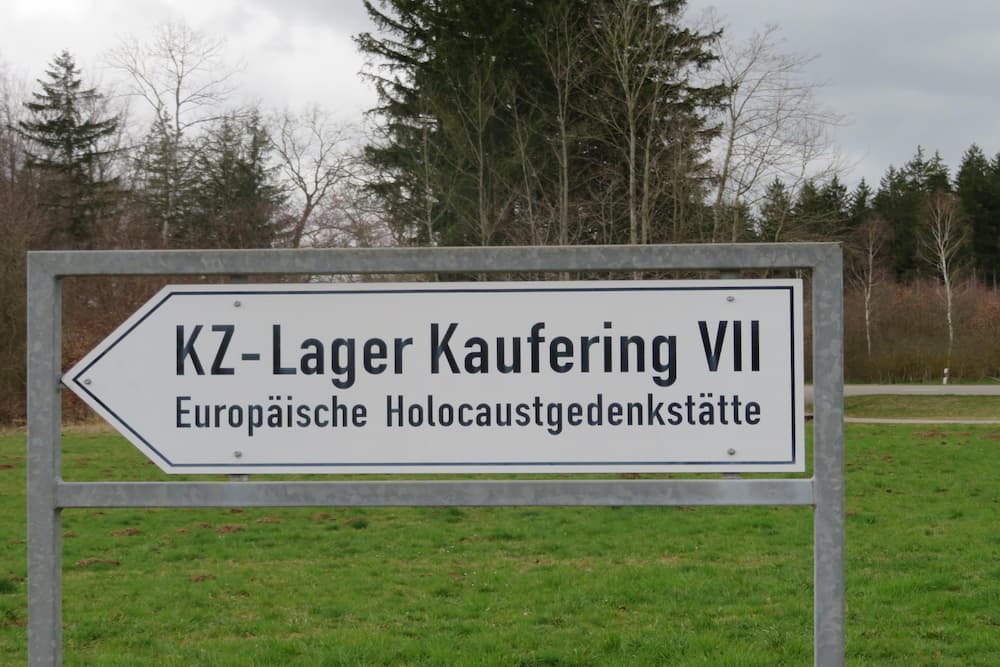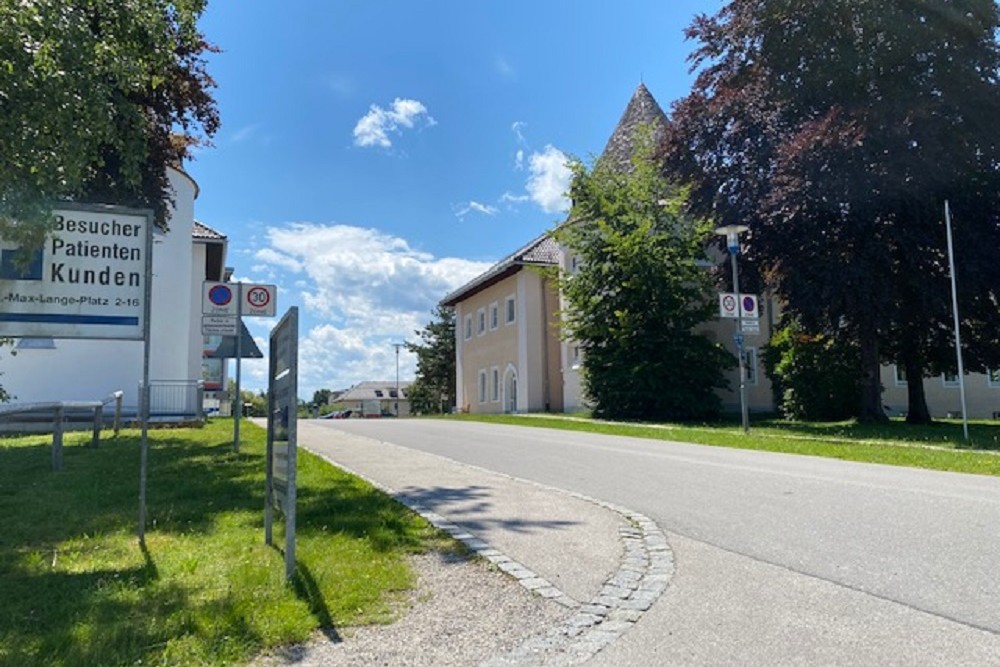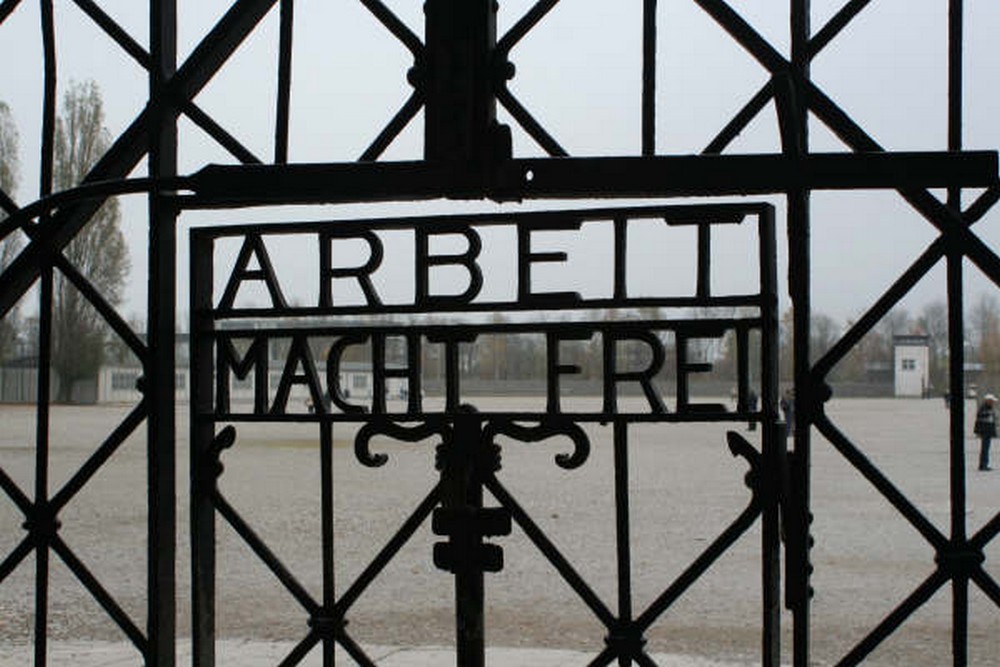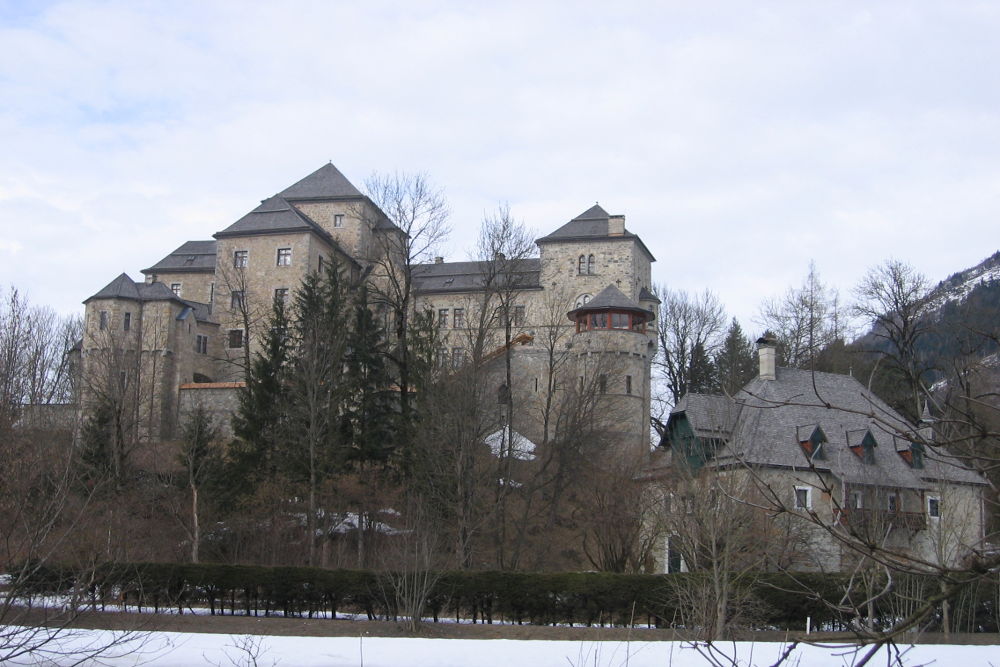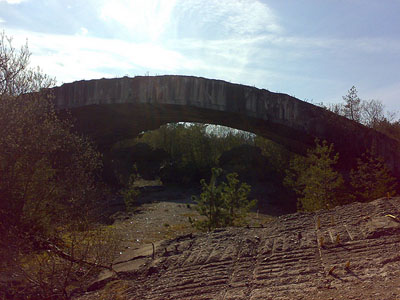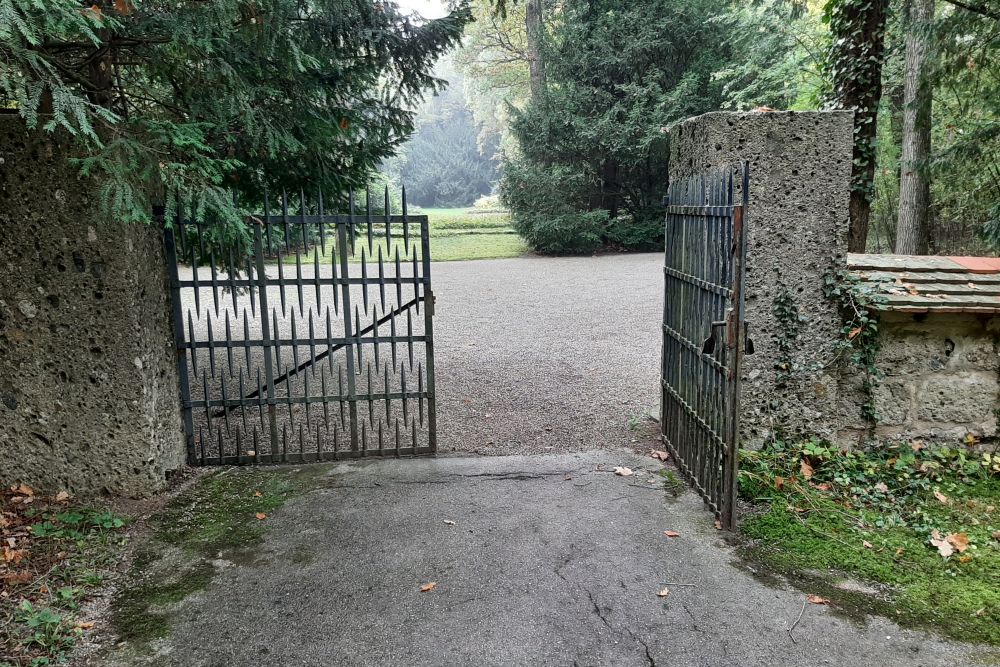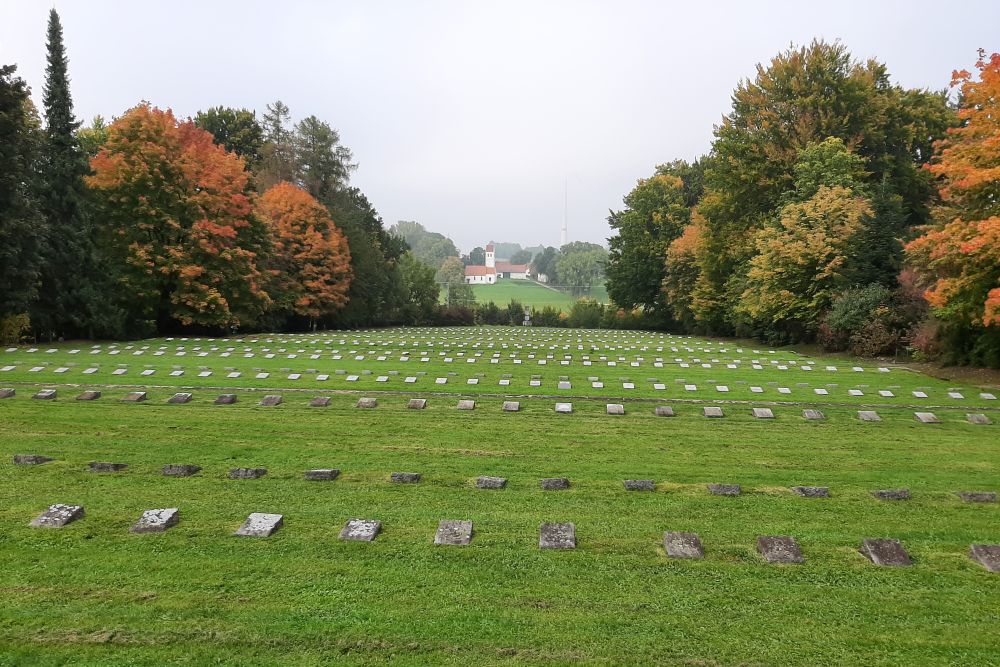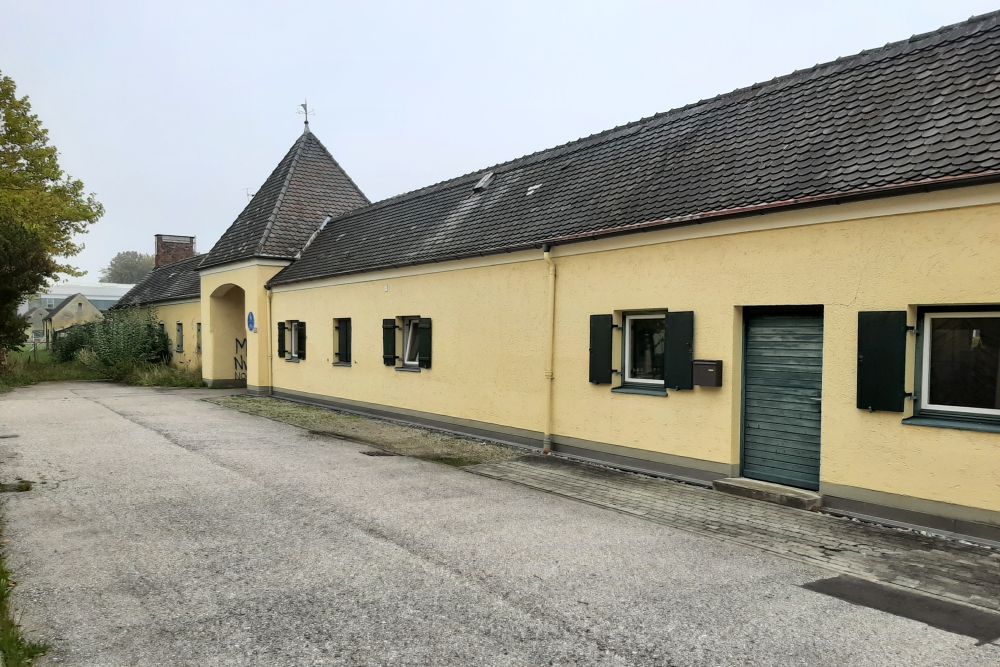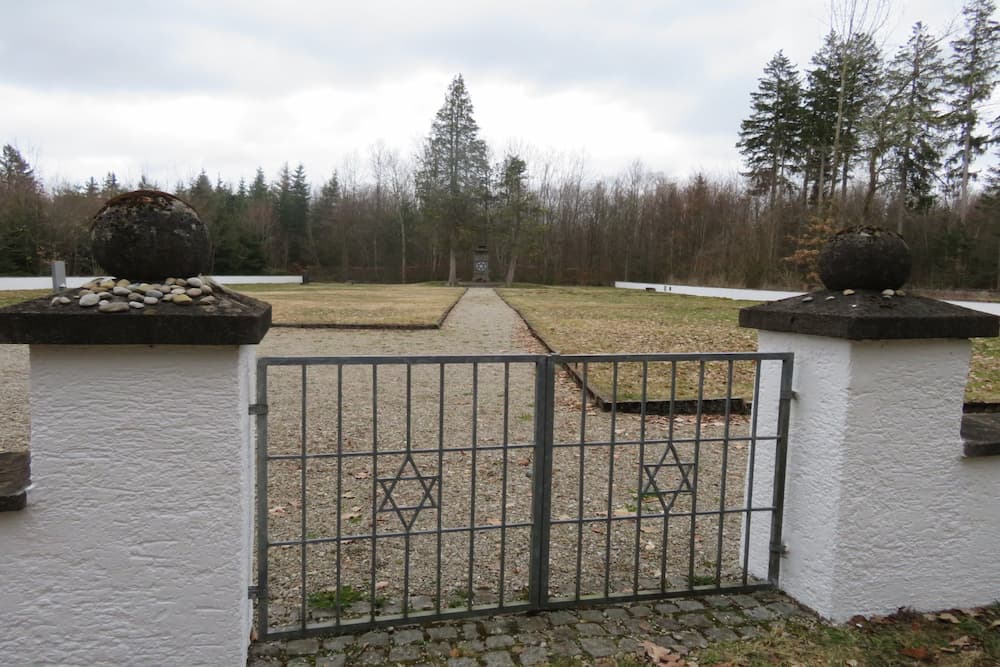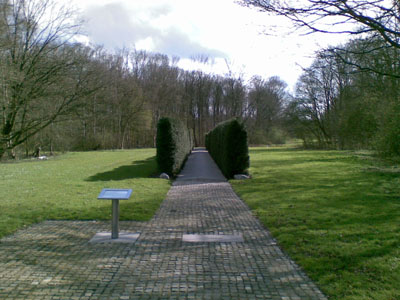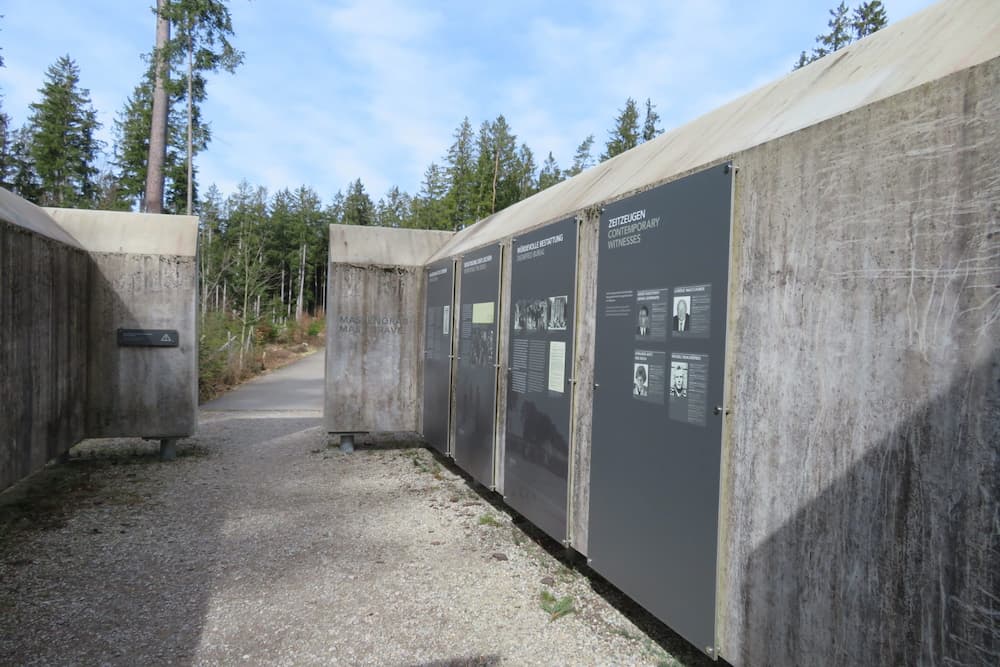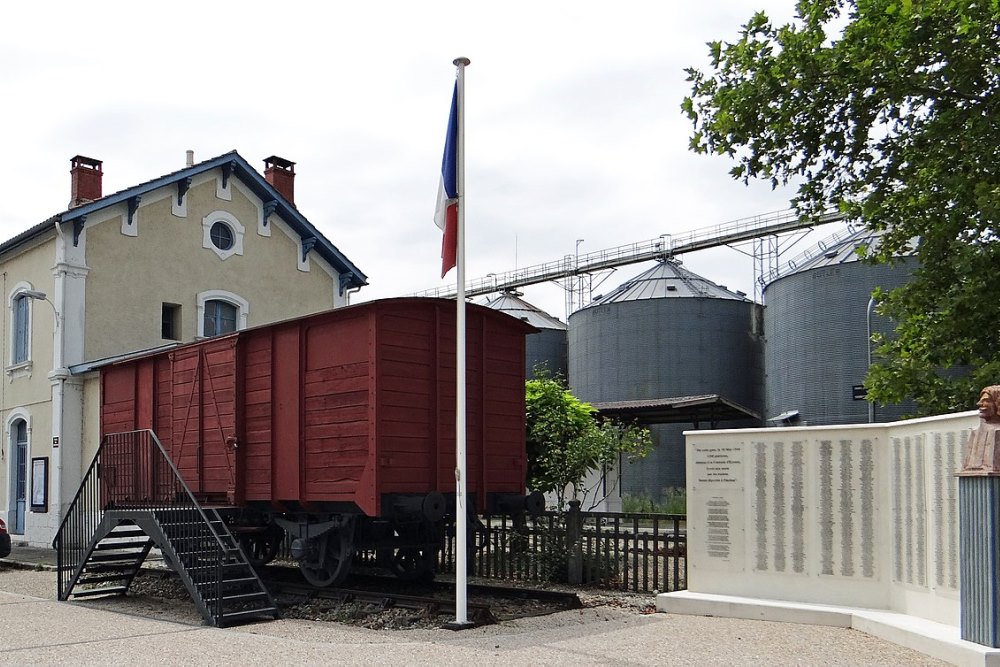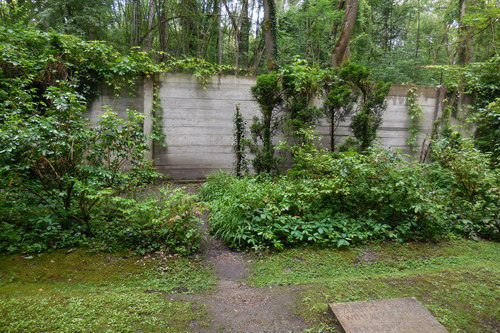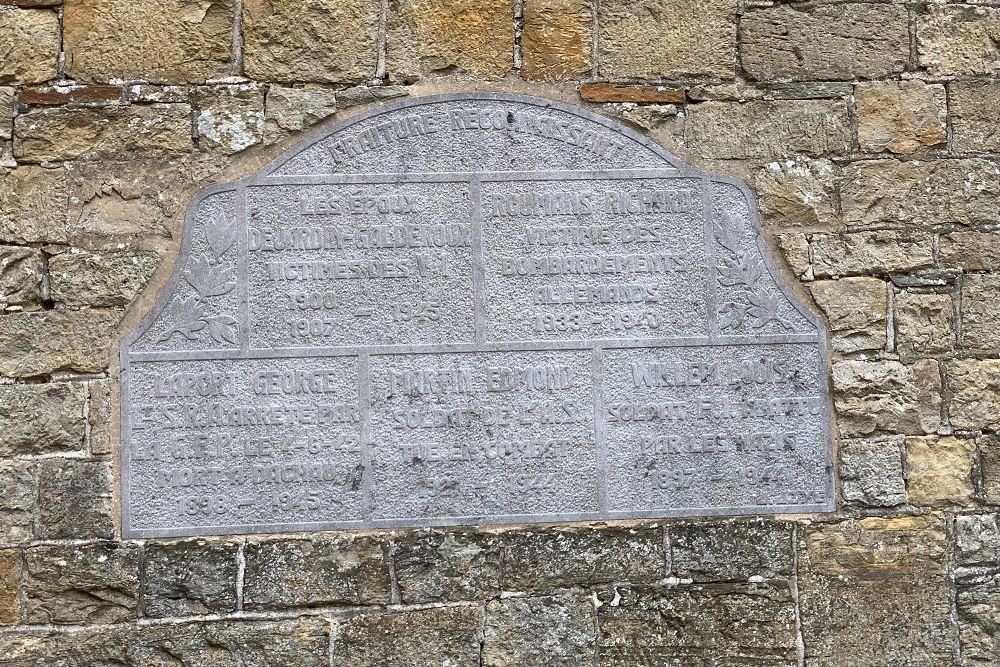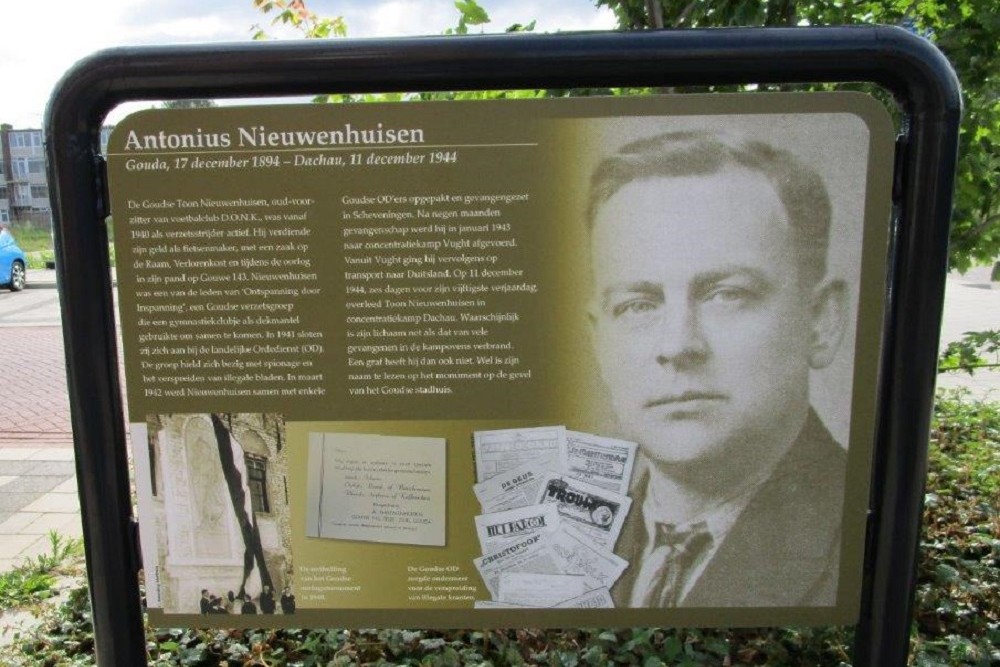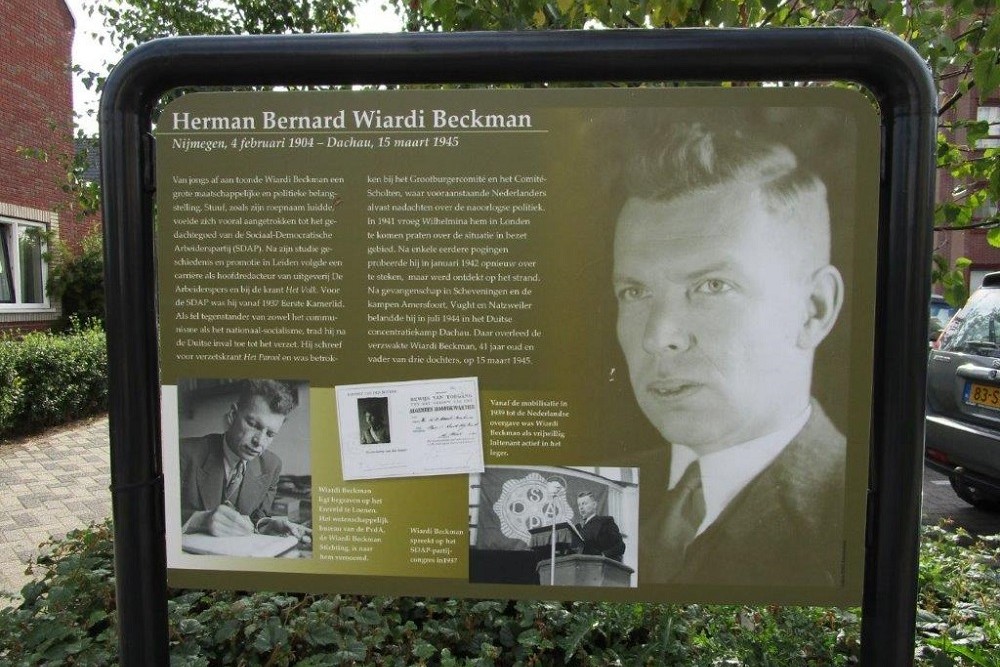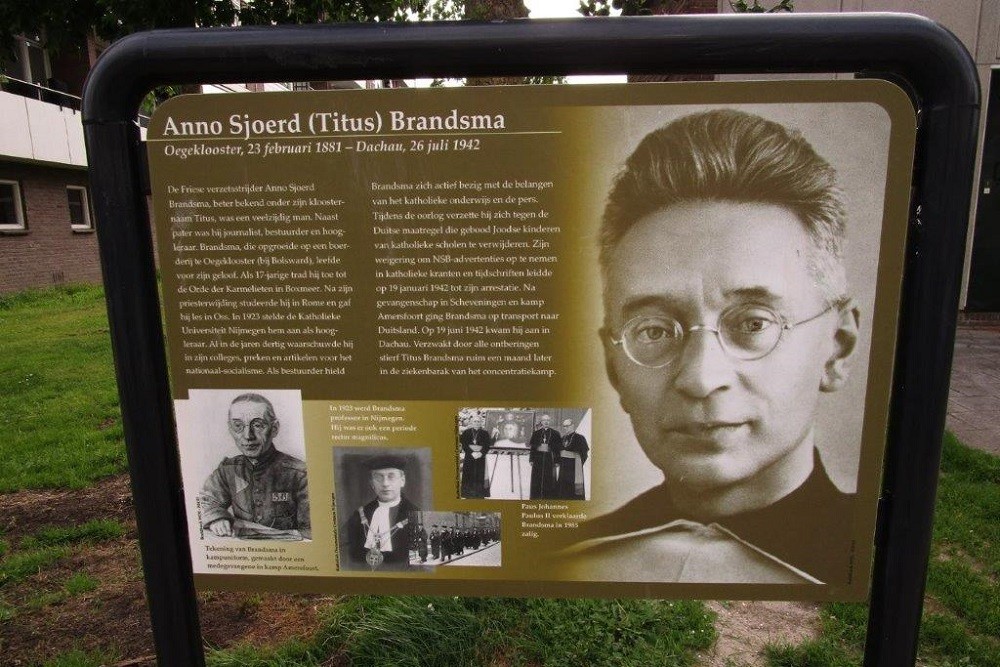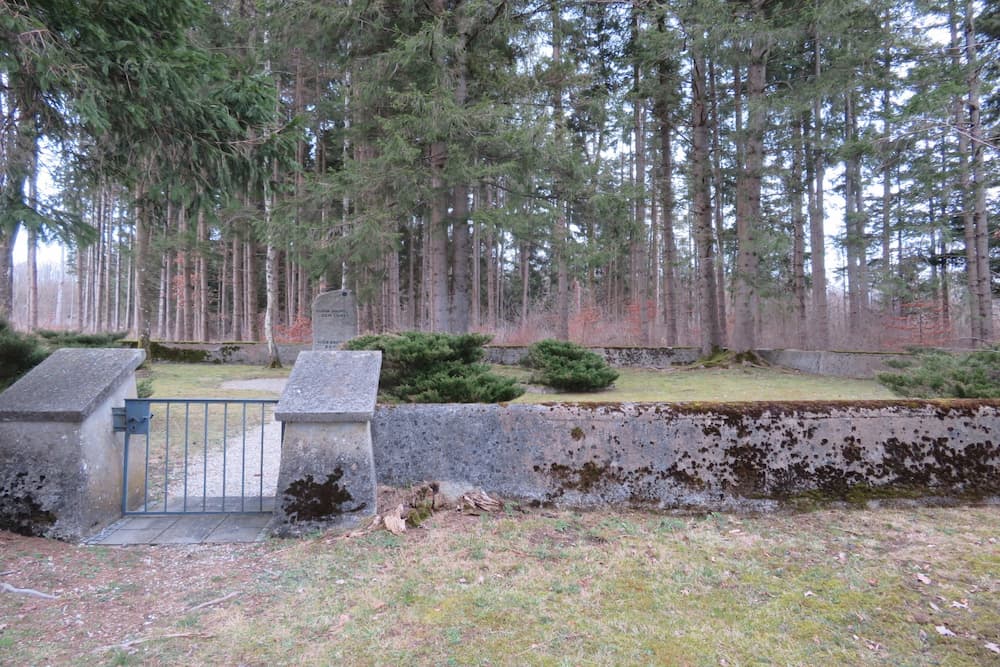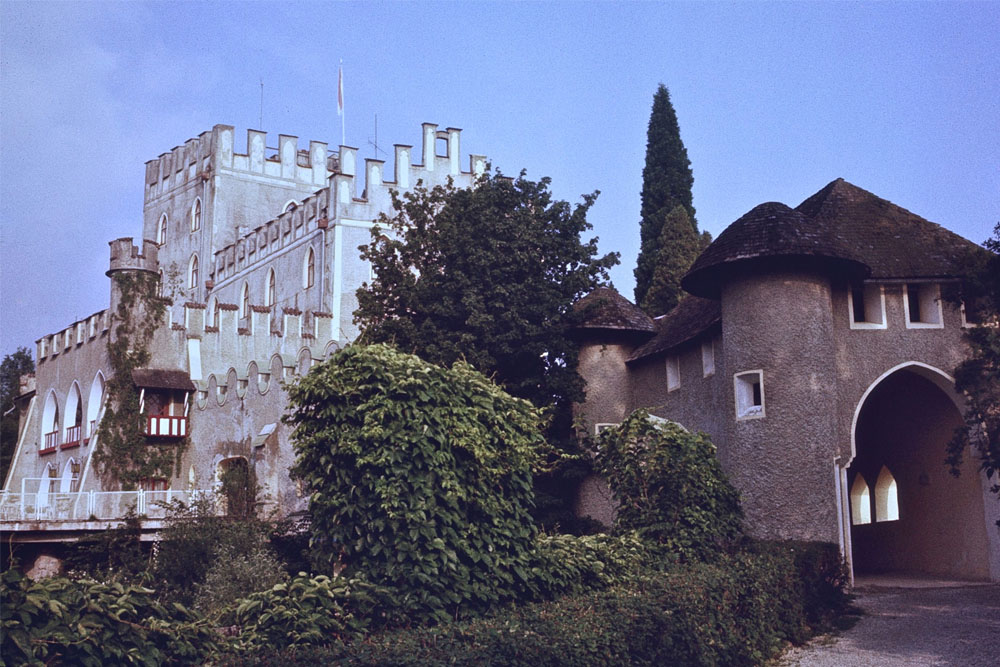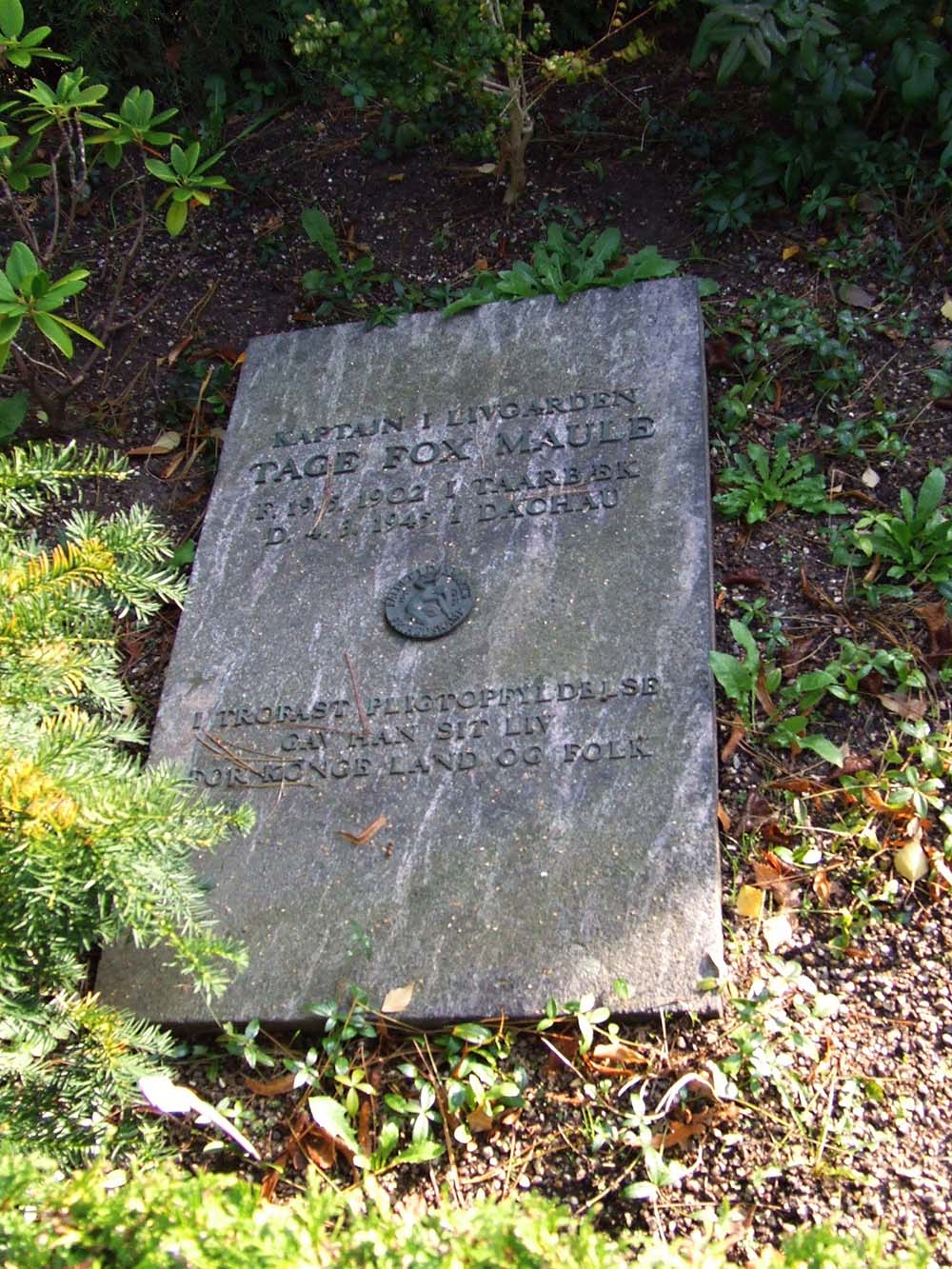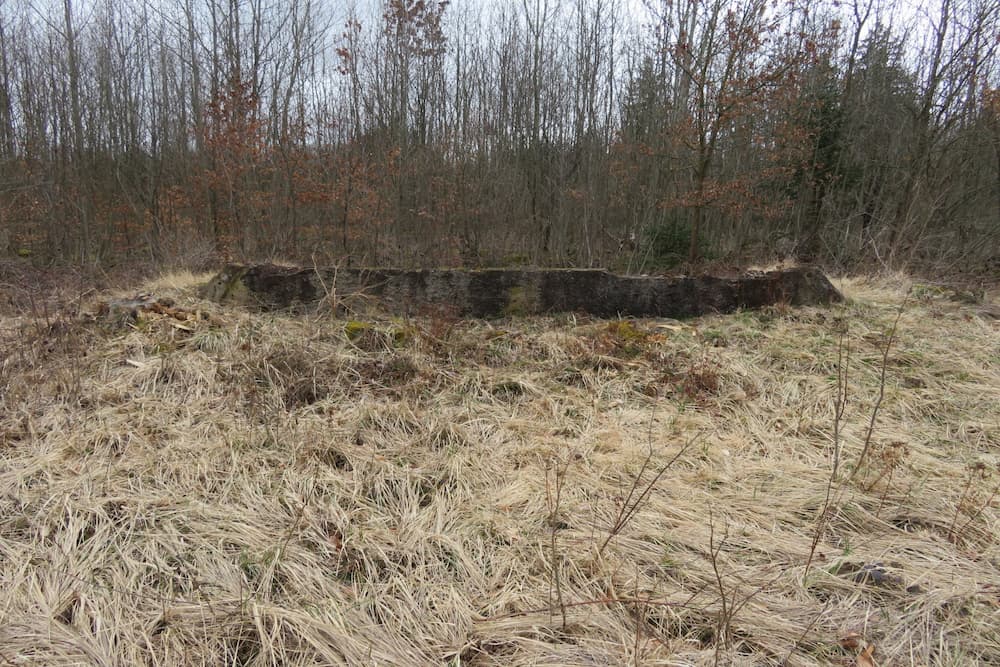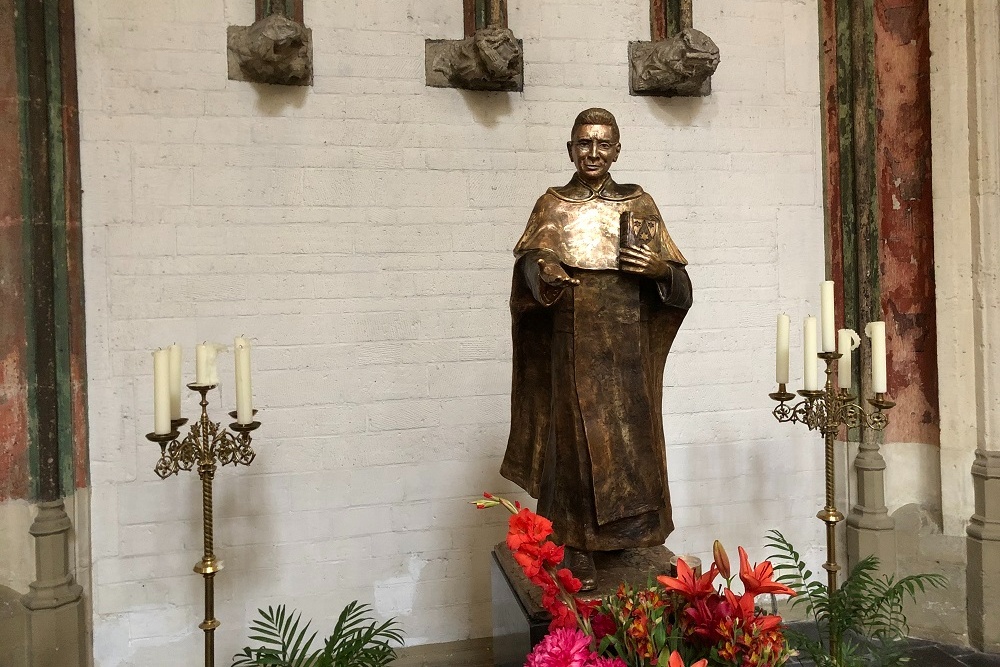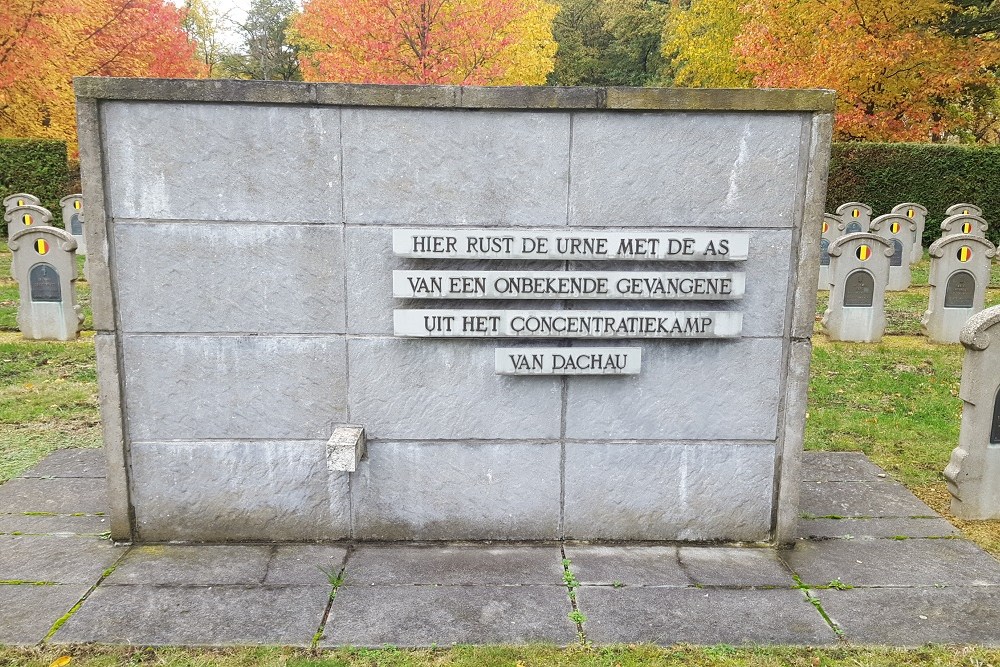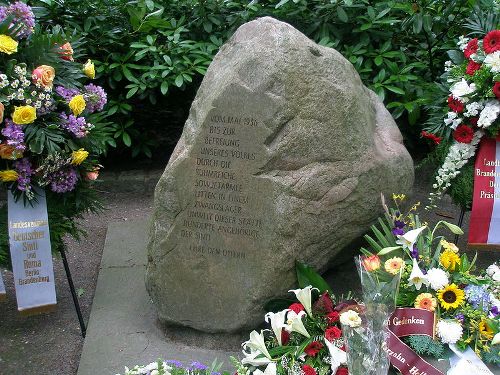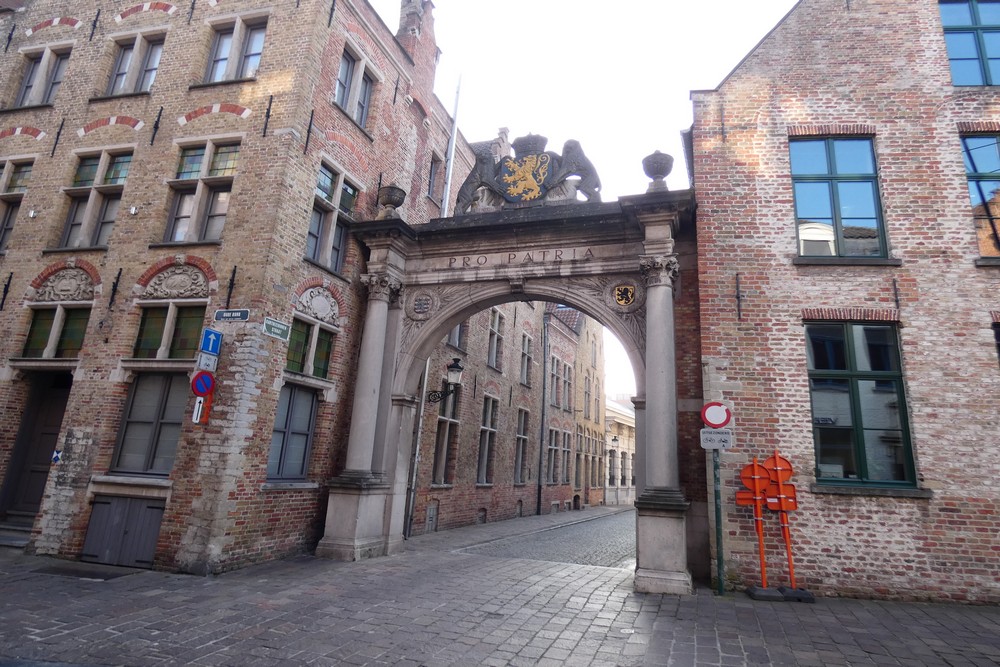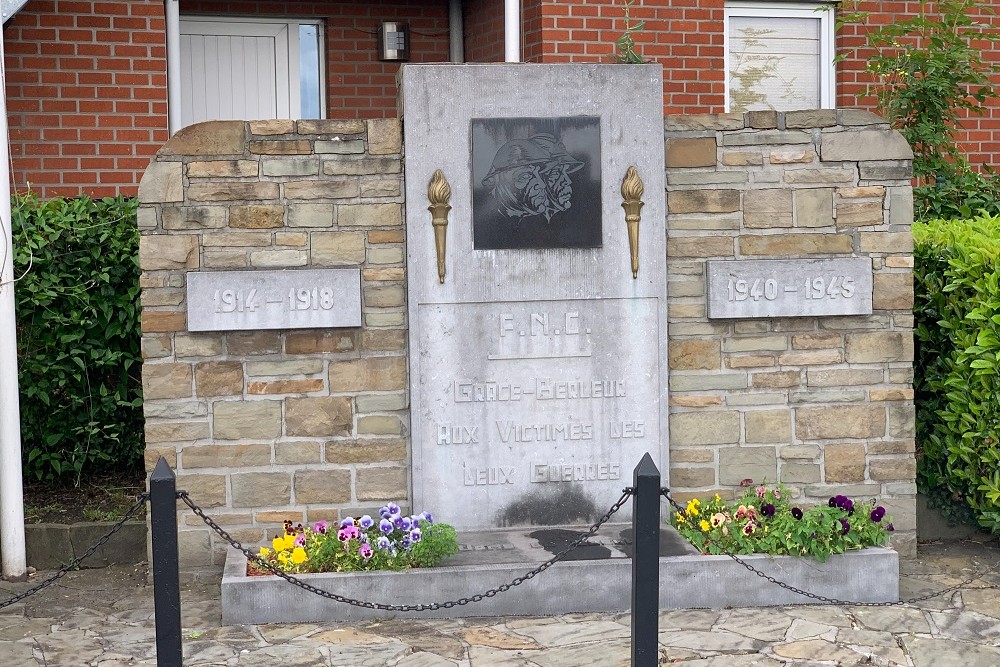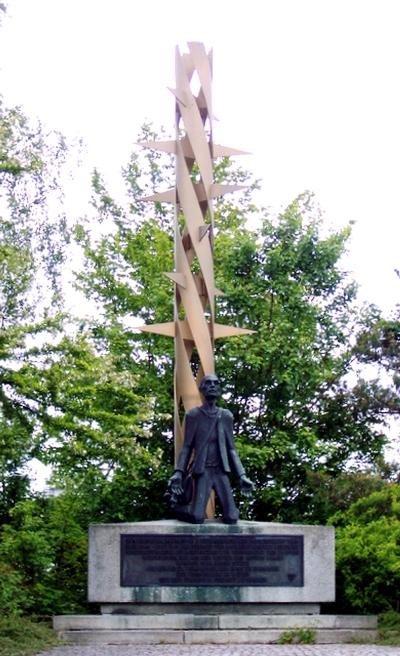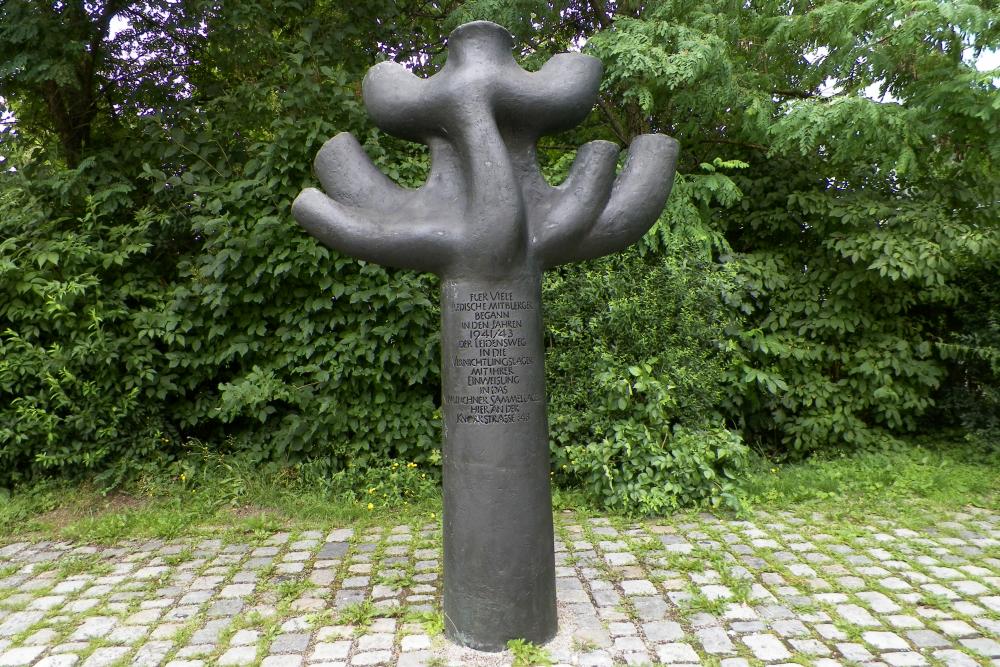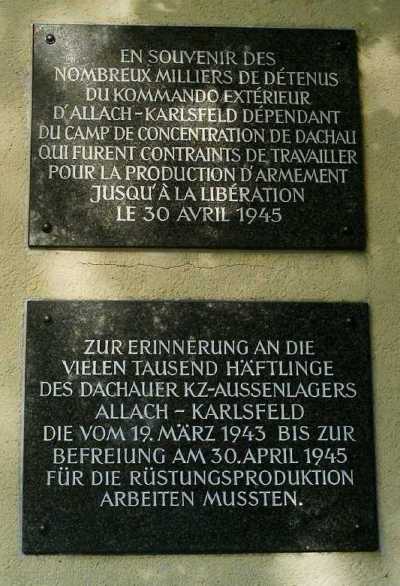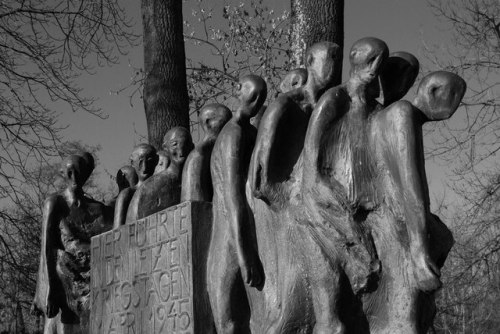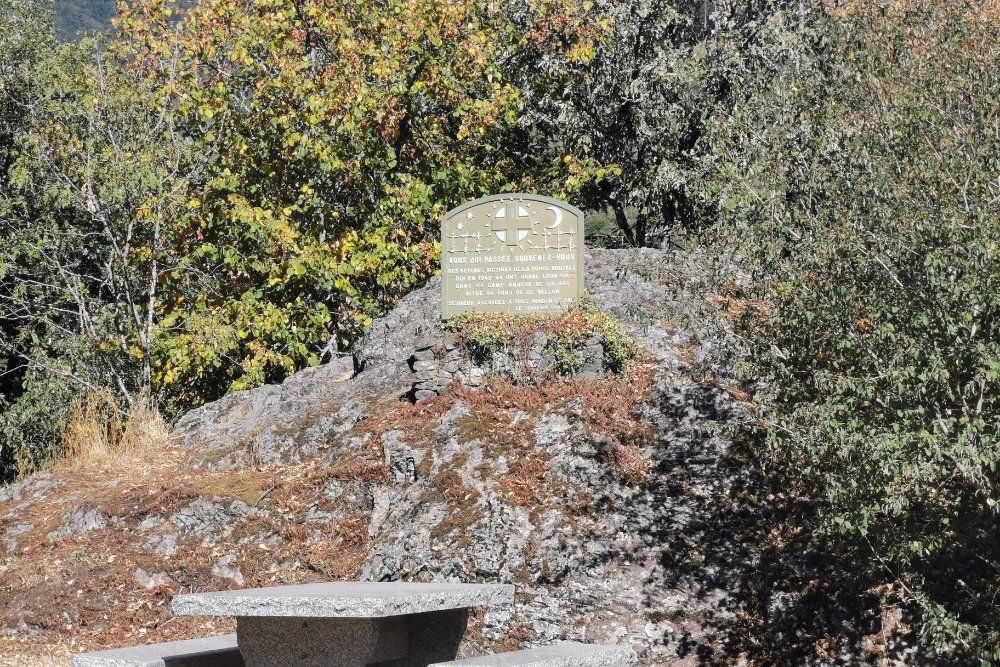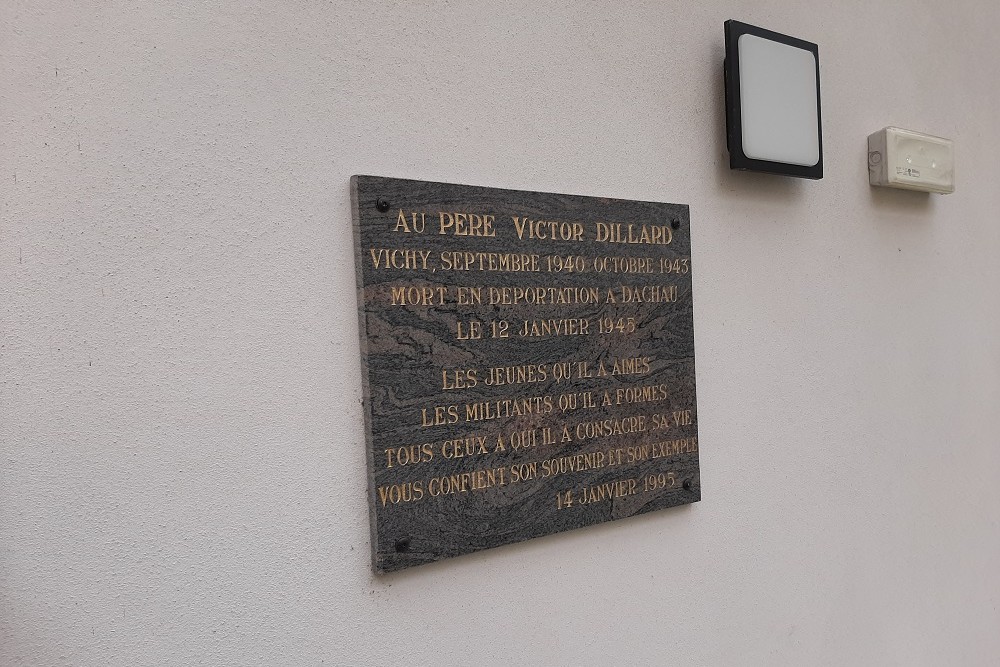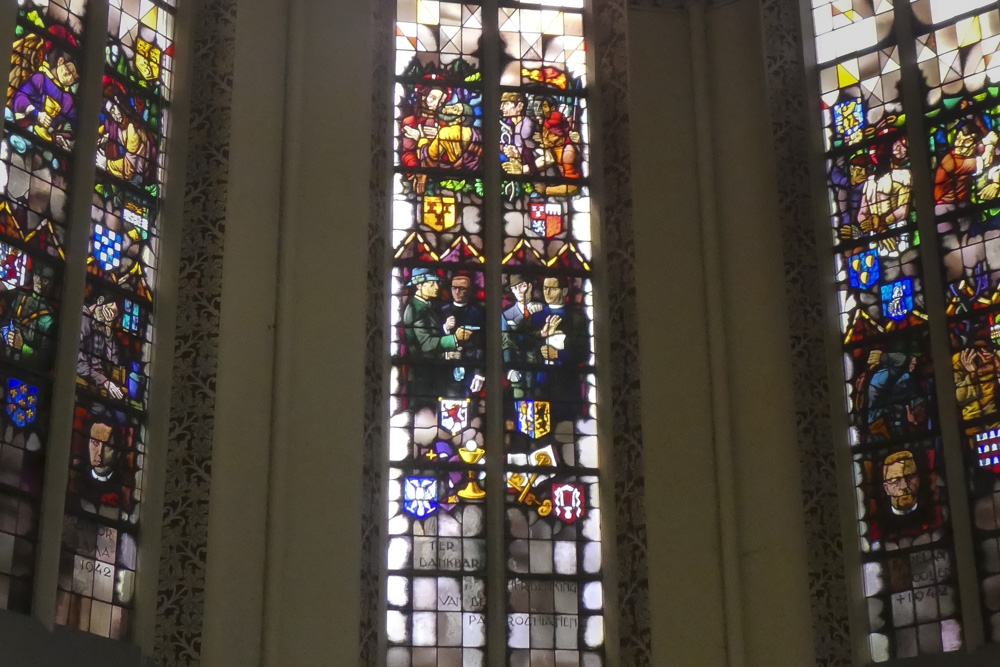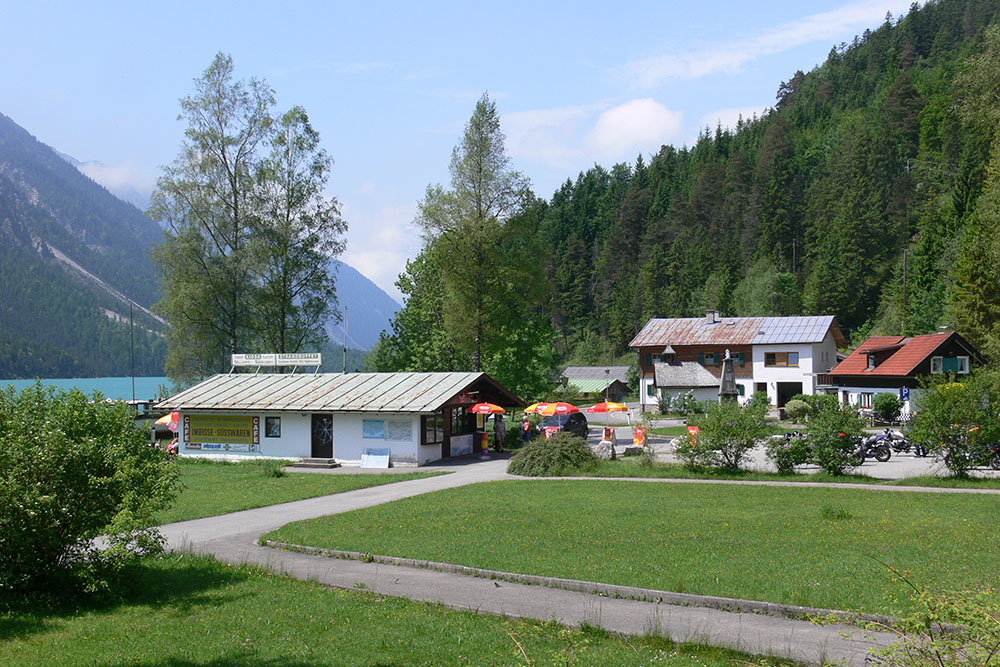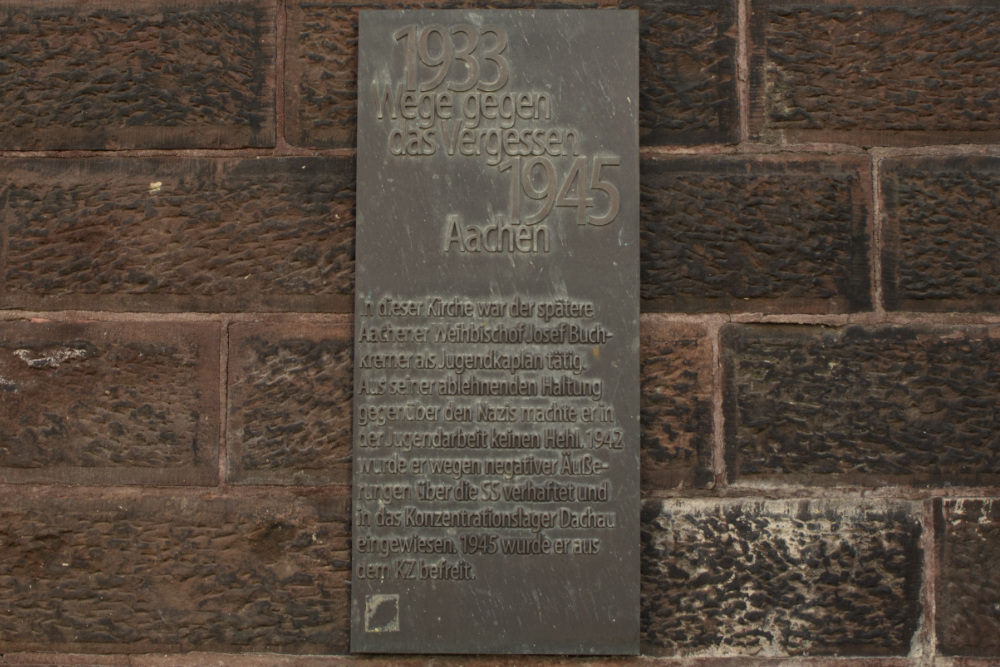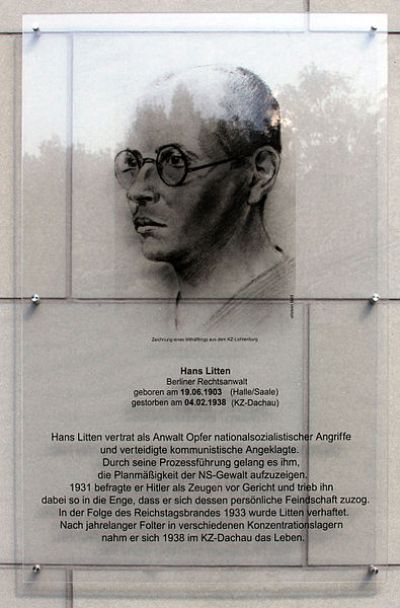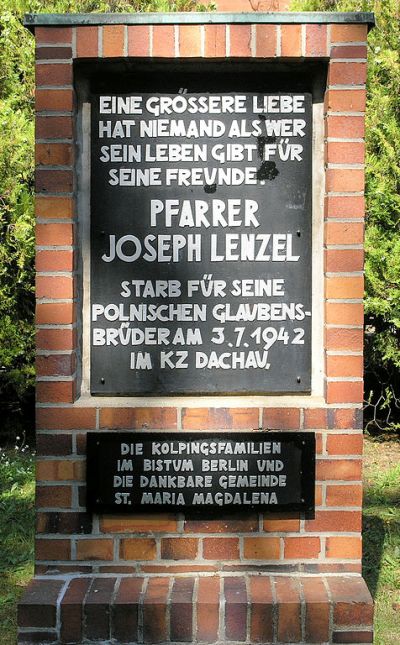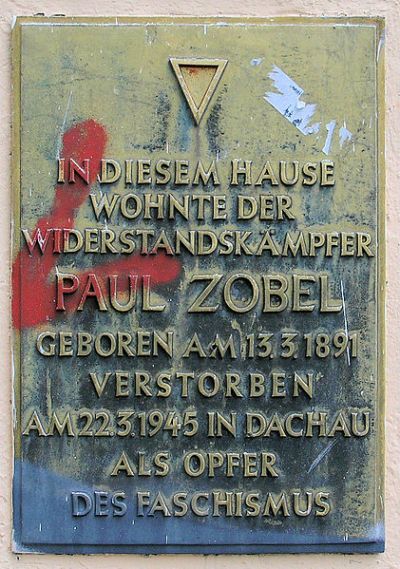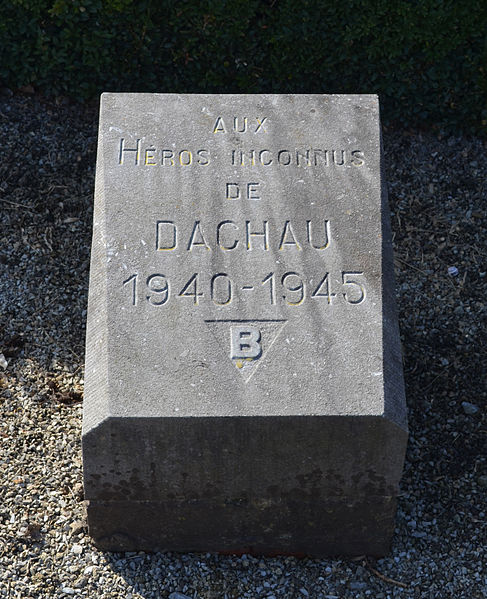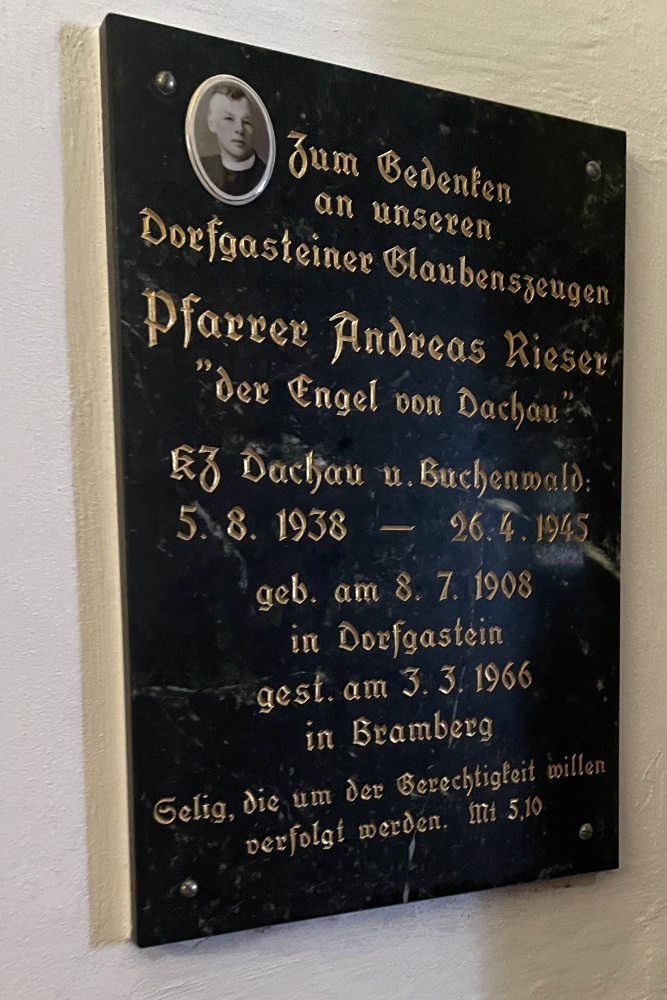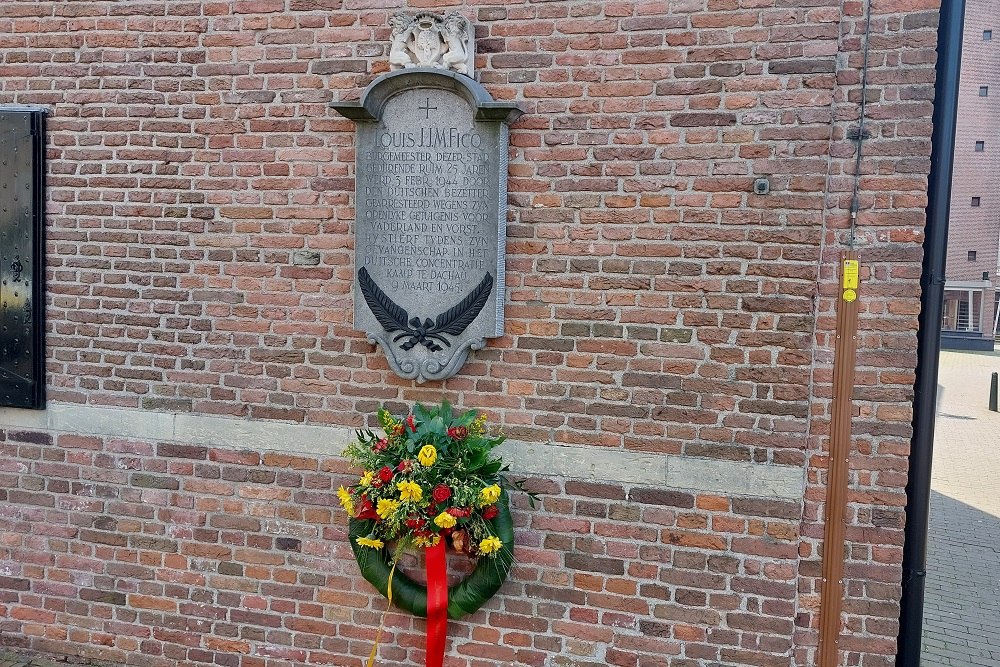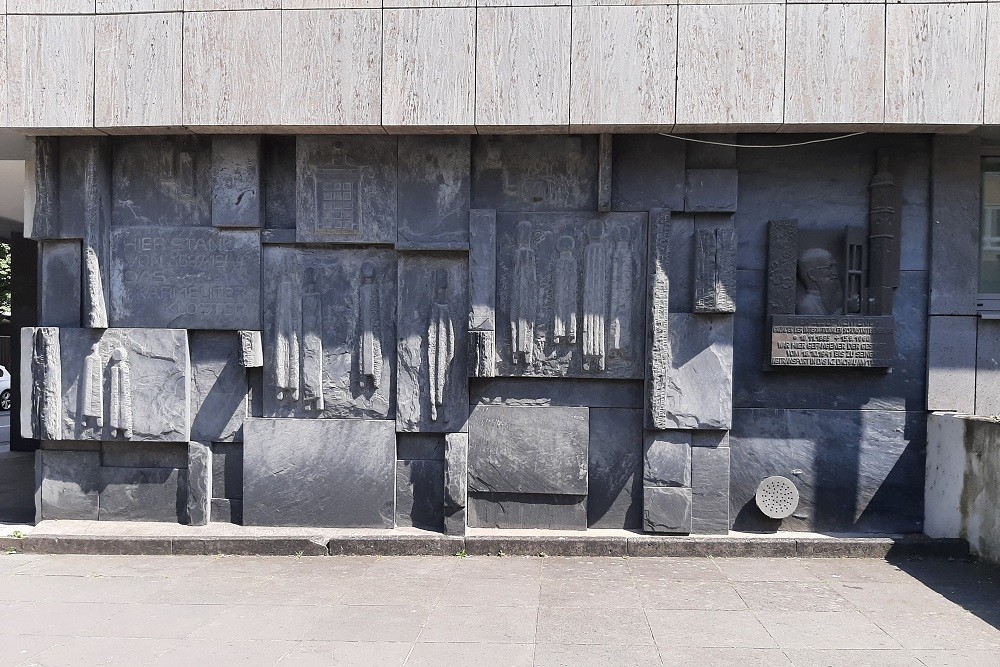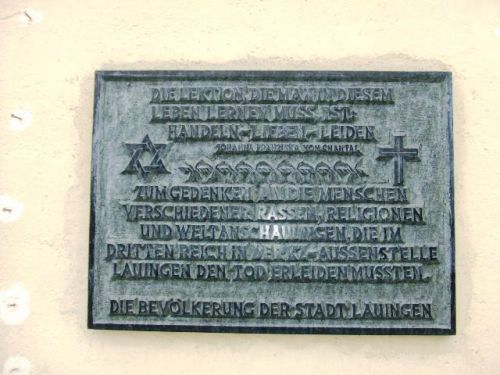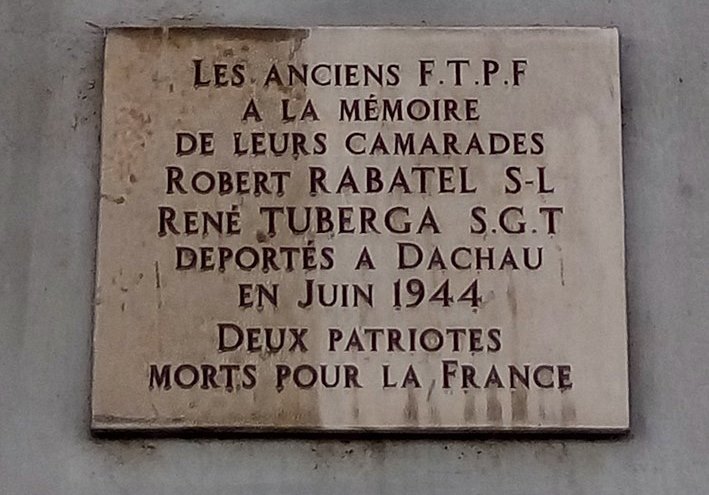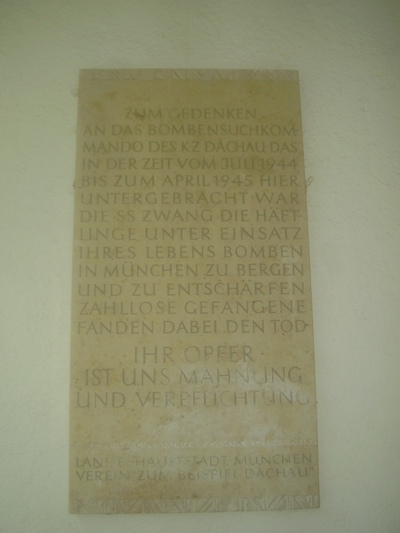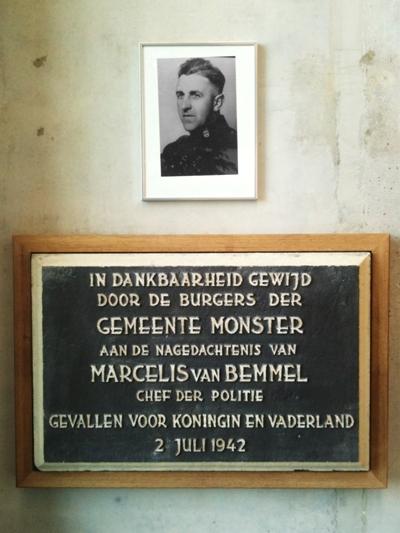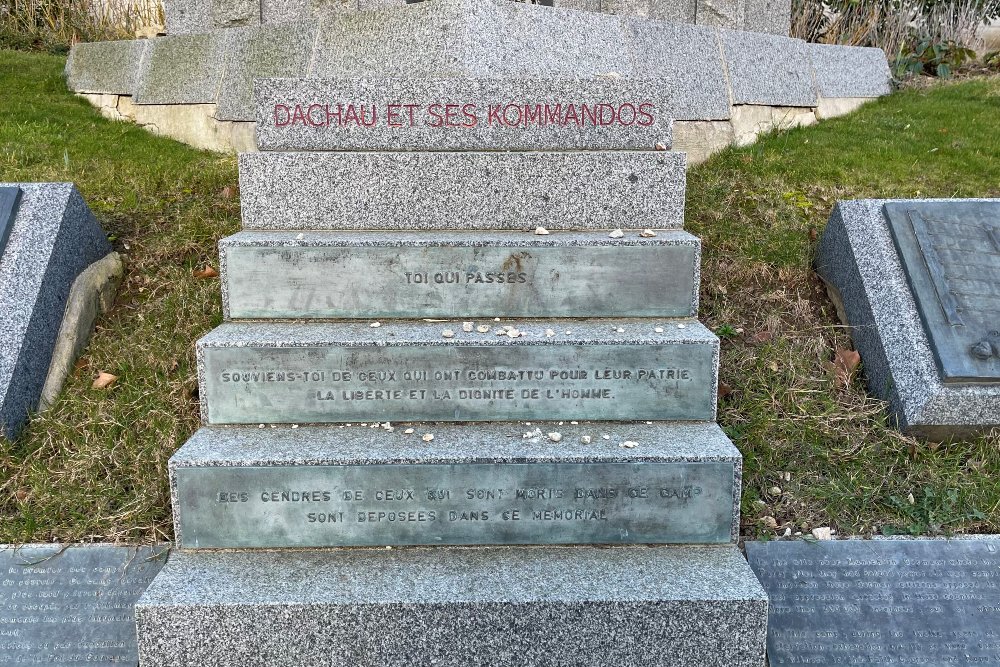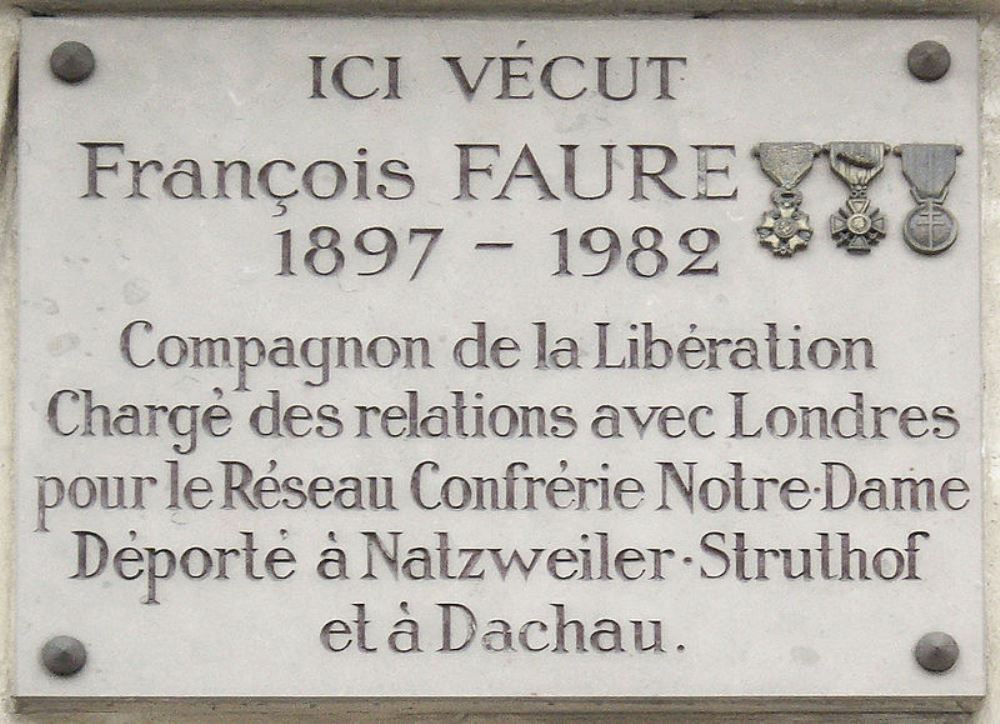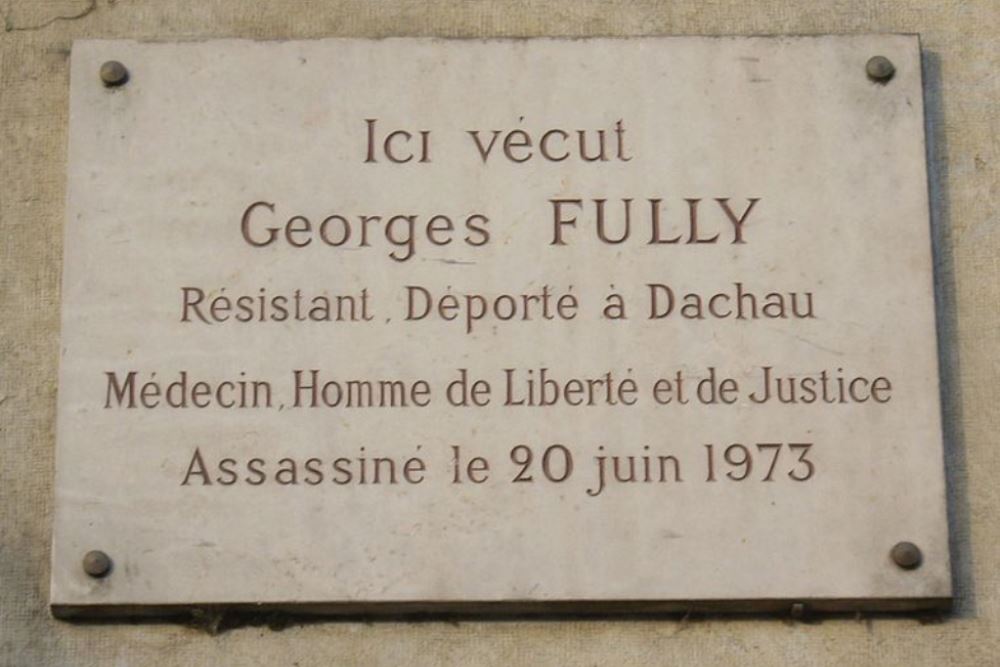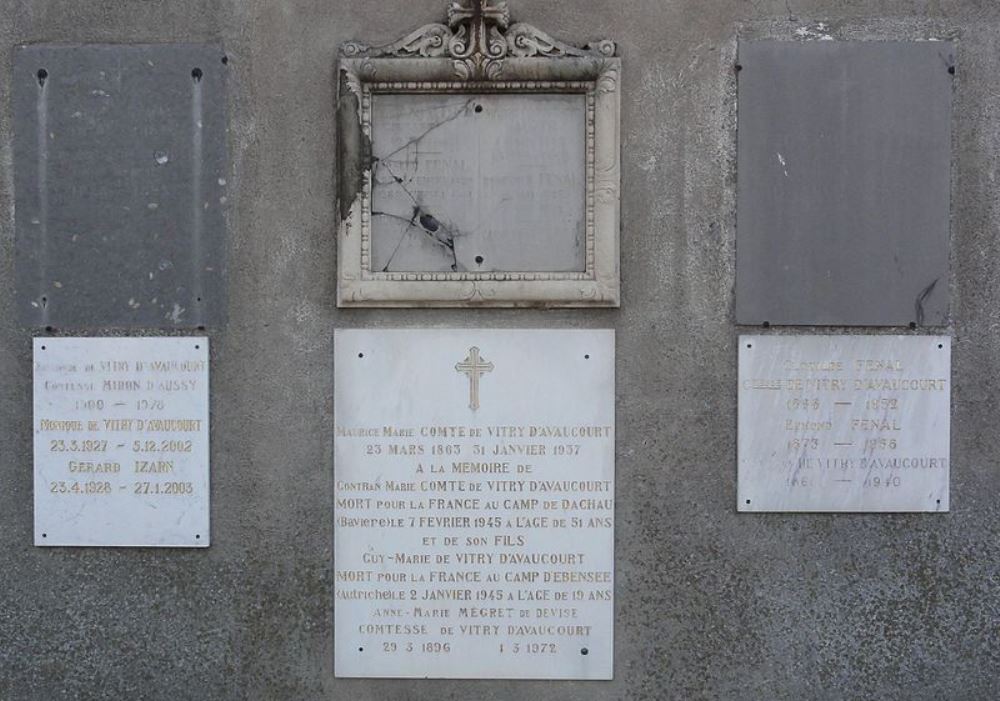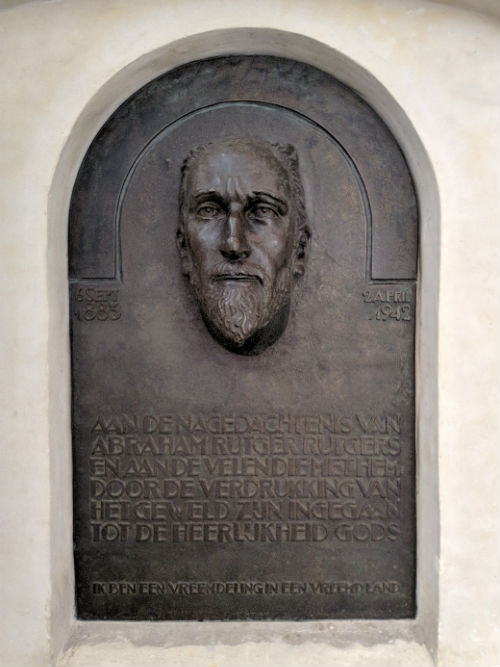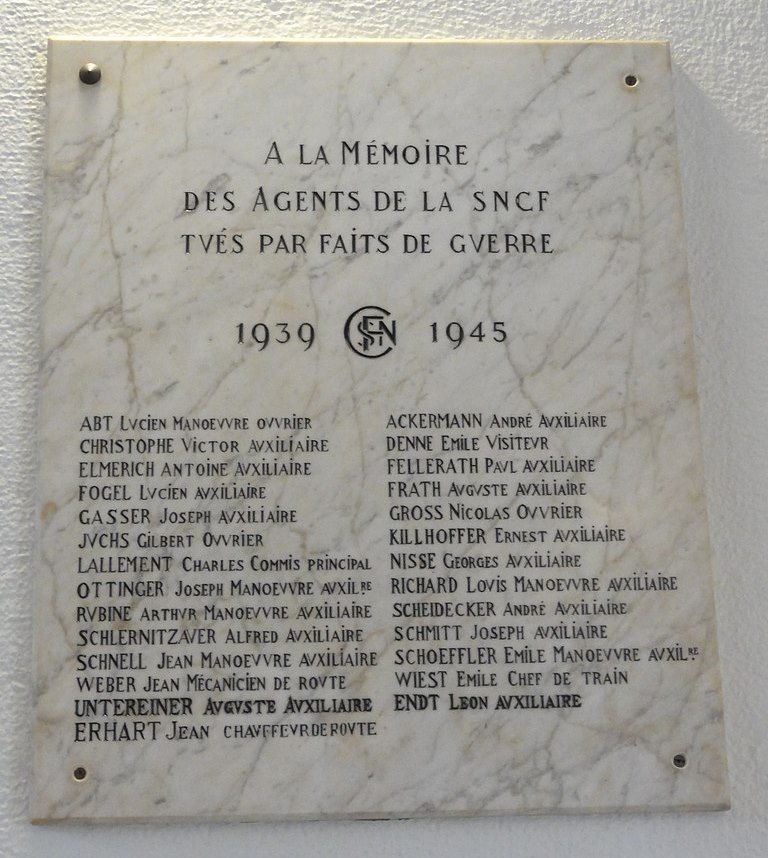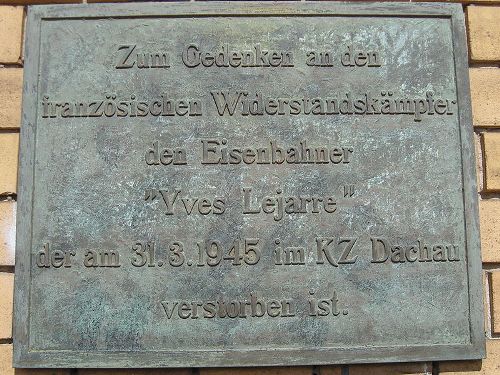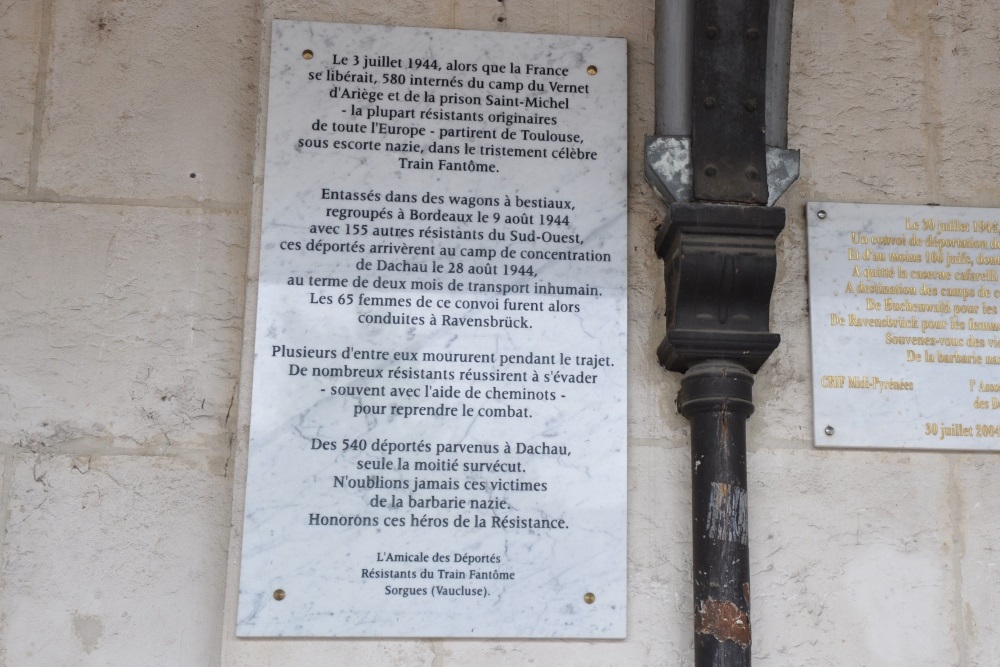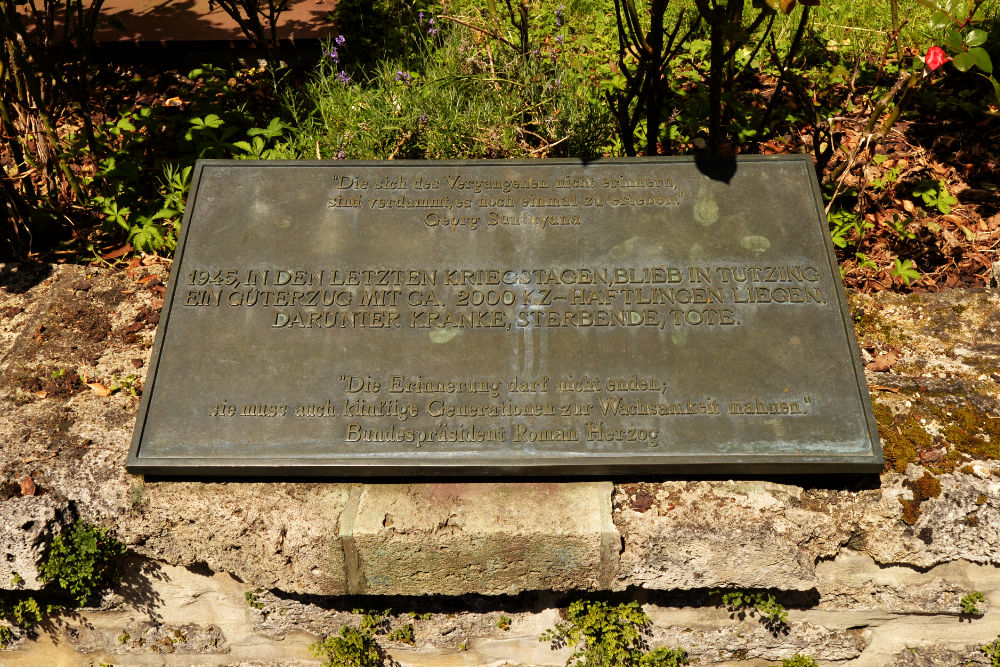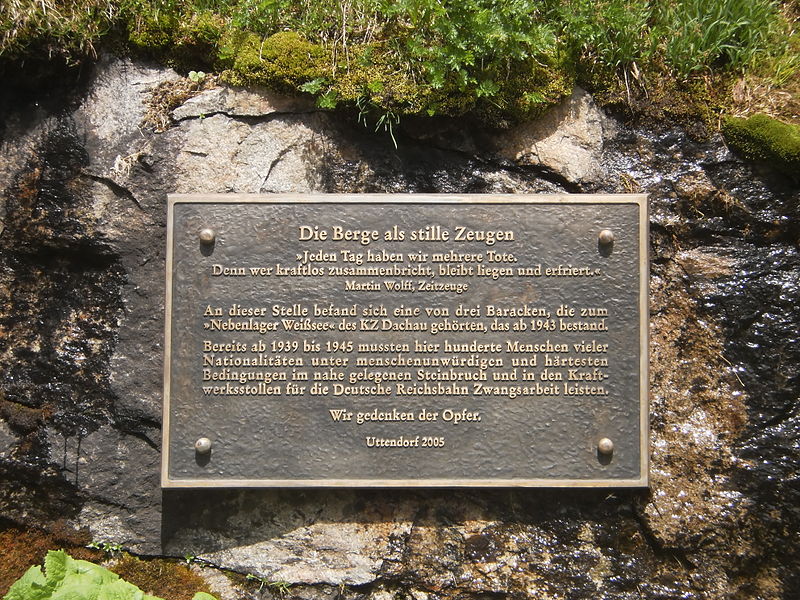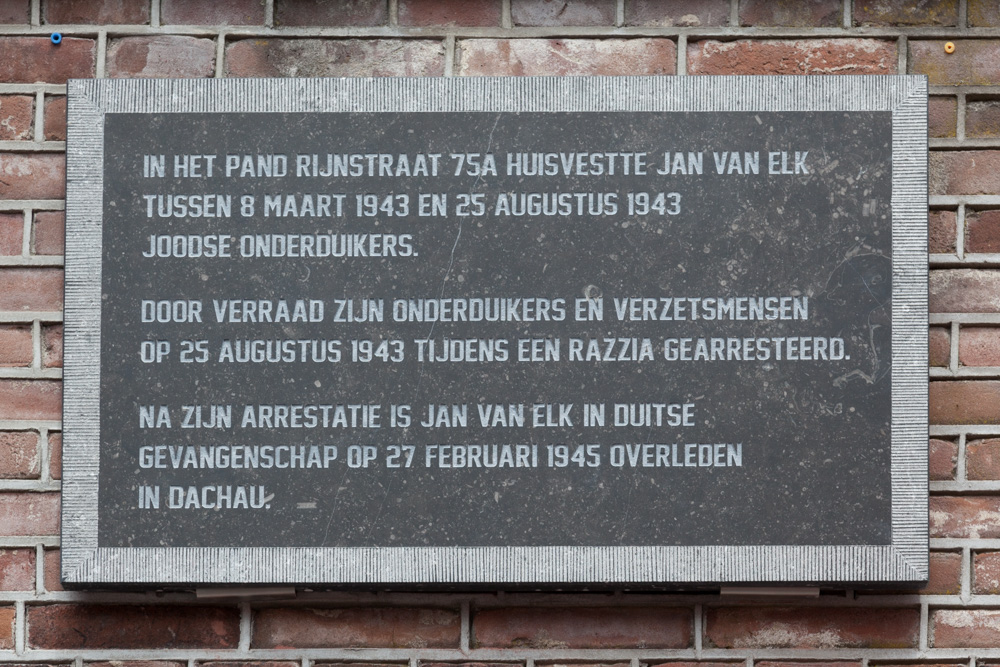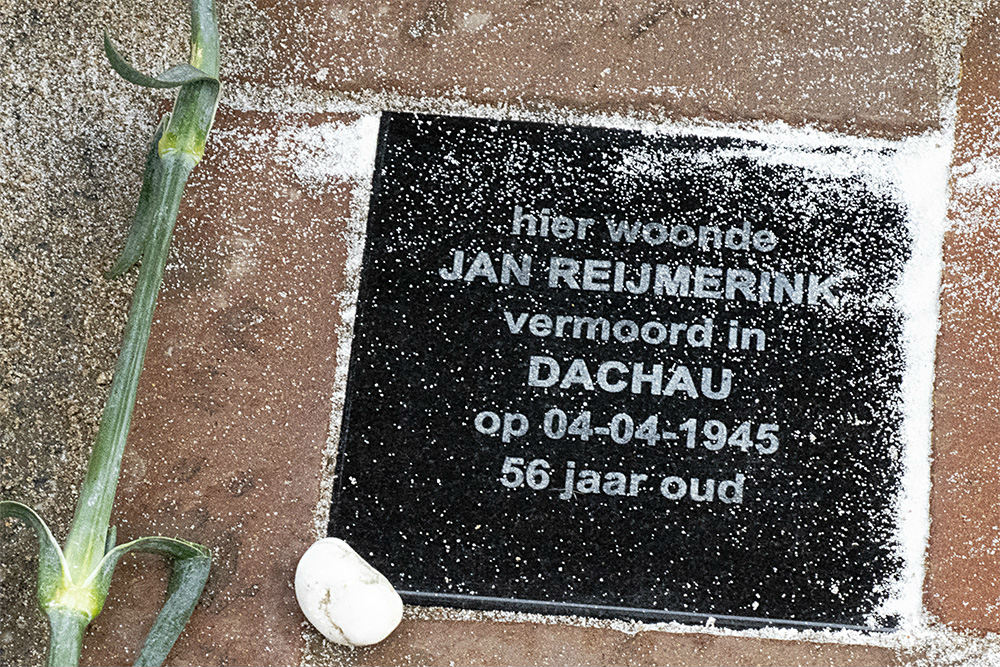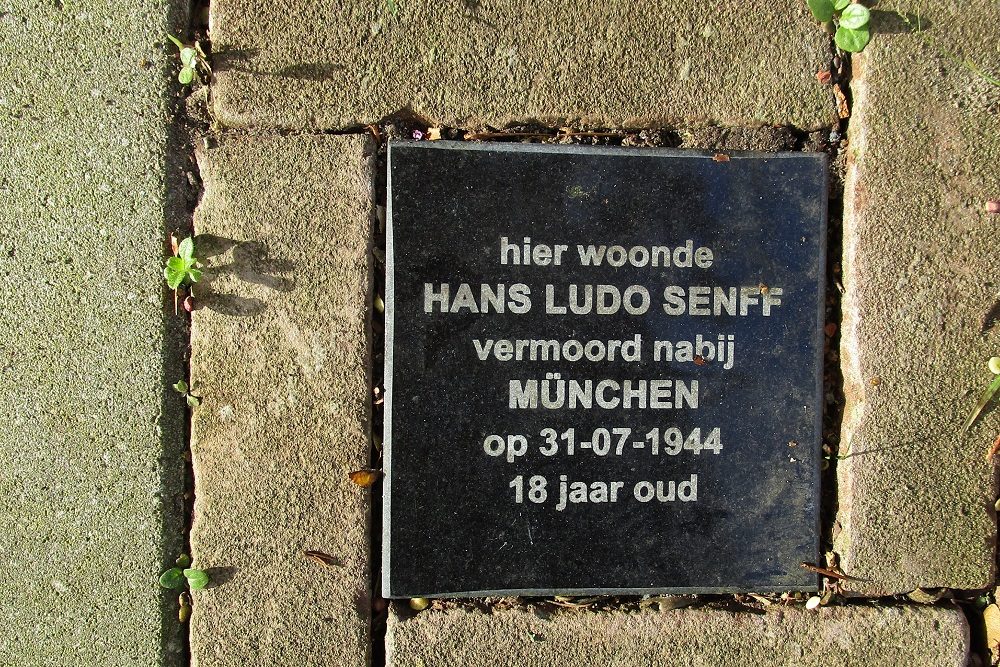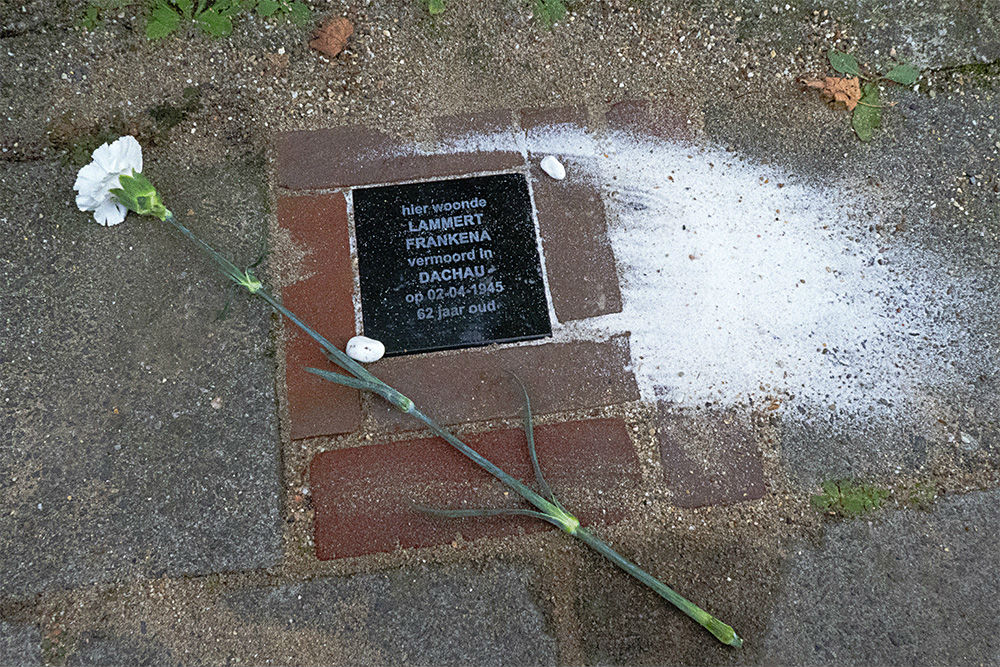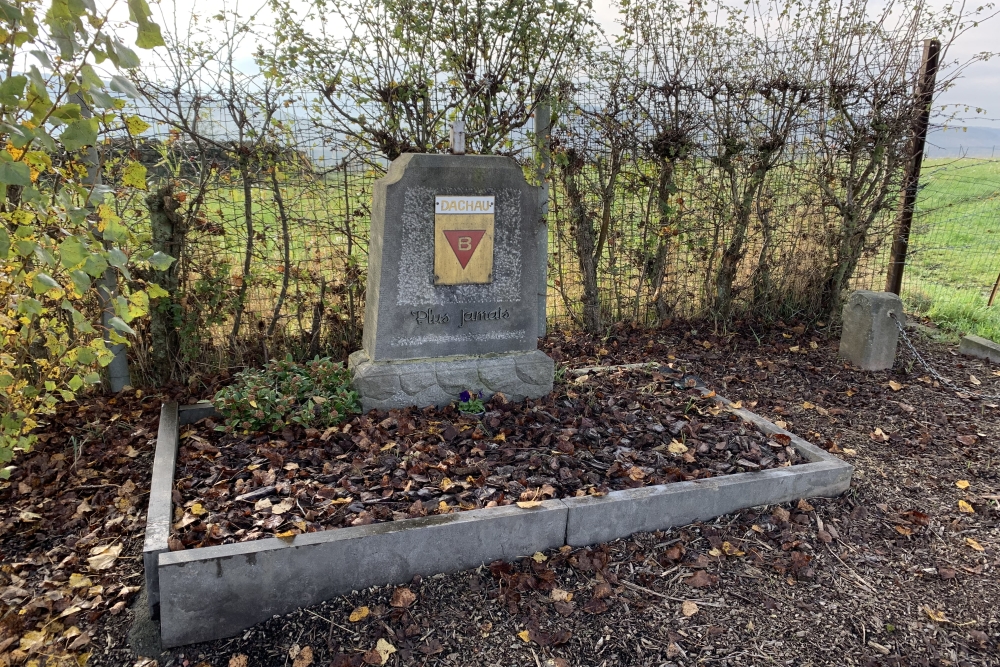Introduction
Even more than 60 years after the collapse of the Third Reich, the name Dachau still evokes memories of the notorious concentration camp that was located there between 1933 and 1945. Inmates of more than 30 nationalities were imprisoned in this camp. Many died from the dismal living conditions. A large number of Dutchmen were also imprisoned in this camp as they had put up resistance against the German occupier.
After the war, Dachau concentration camp has not only become notorious because of the deplorable living conditions in the camp but also because of three rather controversial issues. First of all, after the war uncertainty arose as to the question whether one of the gas chambers in the camp had been intended to kill people and whether people have actually been gassed in this chamber. The scope of the war crime, committed by the Americans on the day the camp was liberated and the Malmédy trial, held in the camp after the war are still controversial issues to this day. The Malmédy trial is briefly discussed and a description of the blood bath in Dachau can be found in a separate article. See page 9.
Definitielijst
- concentration camp
- Closed camp where people are being held captive that are considered to be anti- social, enemies of the state, criminal or unwanted individuals. These groups mostly do not get a fair trial or are condemned to doing time in a camp.
- Dachau
- City in the German state of Bavaria where the Nazis established their first concentration camp.
- resistance
- Resistance against the enemy. Often also with armed resources.
Images
Foundation
On March 22, 1933, an important event unfolded in the Bavarian city of Dachau near Munich in southern Germany: the first official concentration camp of the Nazis was opened. Since January 30, 1933, the day Hitler took power, various camps were opened in order to incarcerate political enemies but Konzentrationslager Dachau was different. In contrast to camps established earlier, the so-called early or wild concentration camps, Dachau was vast. It had a capacity of 5,000 prisoners and that was large in comparison to the other camps in which often only a few dozen inmates could be housed. Besides, most early camps were intended for temporary use in contrast to Dachau which was intended for long term use. The concentration camp was set up on such a vast scale because other smaller camps lacked the capacity to house an increasing number of prisoners. At the time, the main objective of Dachau was exactly the same as that of all other camps: political prisoners were to be interned here in order to prevent them from endangering the continued existence of the nationalsocialist state.
Two days before, March 20, 1933, Heinrich Himmler had held a press conference on the establishment of the camp. Next day, the Münchener Neueste Nachrichten published an article about the camp. It said the camp was intended for social re-integration: inmates had to work in order to regain their freedom. The objective of the camp was described as follows:
"It is intended to organize (…) the political prisoners in labor teams which are going to cultivate the Dachau swamp (…). After work, speeches on popular and cultural art will be delivered. The intention is to re-educate the internees by work, healthy food and a just treatment of the individual and make him useful for the ideas of the fatherland again."
The soothing words Himmler used in his press conference were not entirely based on the truth. In 1933, all camps had mainly been founded to silence Communists, socialists and other political opponents. As a result of the fire of the Reichstag building on February 27, 1933, a state of emergency had been declared in Germany and civil rights suspended. The Nazis applied Schutzhaft (preventive detention), meaning people could be arrested without trial because they could possibly be enemies of the state. In particular the Communists, the most important opponents of Nazism were to suffer and all prisons and camps were overcrowded in no time. Chaos prevailed in the various camps and in Bavaria, the decision was made to close down all smaller camps and to concentrate the inmates in one huge concentration camp: Dachau.
Another important underlying intention the Nazis had with their concentration camps was to imbue the German population with so much fear they would obey and support the regime. Partially because of the cruel treatment of prisoners the camp soon became notorious and feared. "Be still, otherwise you’ll end up in Dachau," was a phrase often heard among German civilians.
Definitielijst
- concentration camp
- Closed camp where people are being held captive that are considered to be anti- social, enemies of the state, criminal or unwanted individuals. These groups mostly do not get a fair trial or are condemned to doing time in a camp.
- Dachau
- City in the German state of Bavaria where the Nazis established their first concentration camp.
- Nazism
- Abbreviation of national socialism.
- Reichstag building
- German government building in Berlin.
Images
First weeks after the foundation
KZ Dachau was located on the premises of a former powder factory. The decrepit buildings had been renovated by the Reichsarbeitsdienst (RAD). The prison camp consisted of 11 sheds on a field surrounded by a barbed wire fence and five watch towers. Outside the fence stood 15 sheds for the guards and their families. The first 60 prisoners, well known Communist and socialist Nazi opponents arrived in open trucks shortly after the official opening. They seemingly drew much attention as the Münchener Neueste Nachrichten described "the numerous inquisitives who had assembled hours before at the gate of the former powder factory." The inhabitants of Dachau were not only inquisitive, they were hardly upset as well. The municipal middle class considered their Communist fellow citizens, who frequently marched through town on their way to the camp rebels and revolutionaries. Partially influenced by propaganda, these prisoners formed a separate class, in the opinion of the citizens, that was no part of their world. They were Volksschädlinge, enemies of the population who were rightly being locked up.
Although the camp had a capacity of 5,000 persons, in the early days only 200 prisoners were locked up in Dachau. The police was still in charge of security but Heinrich Himmler and his most important subordinate Reinhard Heydrich were setting up plans to have the guarding of the camp taken over by the SS. This was implemented when Himmler was named chief of the political police in Bavaria on April 1, 1933. The SS men were much more fanatic followers of Nationalsocialism than the police officers with the result that the prisoners, direct enemies of the guards, were treated far worse. On April 12, four Jewish political prisoners, Arthur Kahn, Dr. Rudolph Benario, Ernst Goldmann and Erwin Kahn were separated from the other prisoners after a day of torture. The men were taken to a nearby forest where they were murdered. The official cause of death was listed as: "shot while trying to escape", a phrase frequently used to cover up murder on prisoners.
The first commander of Camp Dachau was SS-Standartenführer Hilmar Wäckerle. He was a cruel and inefficient leader who left his prisoners to the moods of the guards. Camp guards frequently took their frustrations and prejudices out on prisoners which sometimes resulted in death. Wäckerle was transferred for his cruel and chaotic leadership and at the end of June 1933 he was replaced by Theodor Eicke who was to see to order and discipline. Eicke taught his subordinates they were superior compared to inmates and they had to act ruthlessly when prisoners violated the strict rules of the camp. His policy, which soon became standard in each concentration camp, was based on the following motto:
"Tolerance makes weak. From this view ruthless action will be taken if it seems necessary in the interest of the fatherland. [..] Political and intellectual agitators from whatever source must be told: watch out that you’re not caught, otherwise we will grab you by the throat and silence you according to your own recipe."
Eicke fired the worst elements of the camp guards and subjected the others to a stern control and rigid discipline. He most adamantly prohibited arbitrary punishment of inmates and replaced it with a system of official penalties. Even the tiniest violation of the camp rules by inmates was to be punished severely, according to Eicke’s rules. Punishment varied from a beating, withholding mail and imposing of rations to hanging with the inmate’s wrists tied to a pole. The most serious transgressions, attempts at escape or attacking a guard were punished with "on the spot executions". Although chaos and arbitrariness no longer prevailed, as when Wäckerle was still in charge, inmates of Dachau were never sure of their lives. The rules were so strict and penalties so disproportionate that life in Dachau was extremely harsh.
Definitielijst
- concentration camp
- Closed camp where people are being held captive that are considered to be anti- social, enemies of the state, criminal or unwanted individuals. These groups mostly do not get a fair trial or are condemned to doing time in a camp.
- Dachau
- City in the German state of Bavaria where the Nazis established their first concentration camp.
- Nazi
- Abbreviation of a national socialist.
- propaganda
- Often misleading information used to gain support among supporters or to gain support. Often used to accomplish ideas and political goals.
- Reichsarbeitsdienst (RAD)
- Labour service for men between the age of 18 to 25 years old introduced in Nazi Germany in June 1935.
Images
Prior to the outbreak of war
June 20, 1934 saw Theodor Eicke transferred to Heinrich Himmler’s staff and subsequently, he was named Inspektor der Konzentrationslager by the Reichsführer-SS on July 7. Command of the Dachau camp was temporarily taken over by Michael Lippert, leader of the Wachsturmbann Dachau and Günther Tamuscke, leader of the Schutzhaftlager. On December 10, SS-Oberführer Heinrich Deubel was appointed camp commander. In his capacity as inspector of concentration camps, Eicke made Dachau into the role model for all concentration camps within and later also outside the Reich. Shorty before Eicke’s appointment as inspector, the camp played an important role in the Night of the Long Knives. On July 1 and 2, 1934, 17 men were executed in the camp. These people were considered enemies who stood in the way of the continuing existence of the Reich, just like SA leader Ernst Röhm. Moreover, some old debts were paid as one of those executed in Dachau was Gustav Ritter von Kahr who had refused to cooperate during the Hitler Putsch in 1923.
In March 1935, Dachau was one of seven major concentration camps in Germany. At that point in time, the camp housed some 2,500 inmates. Those were not only political prisoners as meanwhile the camp was also used to imprison criminals and so-called anti-socials – like homosexuals, long term jobless people and beggars. From 1935 onwards, people who had been sentenced by a judge were sent directly to a concentration camp. In order to handle the influx of prisoners the camp was reconstructed early 1936. The old buildings of the powder factory were torn down and 34 new sheds were built by the inmates.
The nucleus of the camp was a rectangle of 328 by 656 yards with the Schutzhaftlager (preventive detention camp) in it where ultimately 40,000 to 50,000 inmates could be housed. South of the sheds of the Schutzhaftlager, a utility building was erected containing the camp kitchen, the showers, a ware house for the possessions of the inmates, one for clothing, a shoe store, a tailor and a boot maker shop. On the roof a sign with one of the slogans of the German concentration camps: Es gibt einen Weg zur Freiheit, seine Meilensteine heissen Fleiss, Sauberkeit, Ehrlichkeit, Wahrhaftigkeit, Nüchternheit, Gehorsamkeit und Liebe zum Vaterlande (There is one way to freedom; its milestones are diligence, cleanliness, honesty, veracity, sobriety, obedience and love for the fatherland). On the gate below the guards building the far better known phrase: Arbeit macht Frei, (Labor liberates)
The work the inmates had to perform in order to earn their freedom took place north of the camp entrance. Here a large industrial site was located where mainly wooden furniture was produced by the inmates and clothing for both SS men and inmates. The prisoners here made long hours but around 1936, the physical conditions in the camp were still somewhat bearable. The almost total isolation from the outside world, the humiliating treatment by the guards, the extremely strict camp rules, the penalties and the insecurity about the duration of their detention made for an extremely heavy mental burden on most inmates of the camp. They lived in enormous insecurity and under extreme pressure.
In the winter, British Christopher Sidgwick paid a visit to Camp Dachau. He wrote about it:
- "They said nothing. They entered with their two mugs, had one filled with soup and the other with potatoes and then entered the dining hall. They could get soup one more time and potatoes as many as they liked until there were no more. Among the hundreds passing us, they were only a few who noticed us and tried to stand at attention. They obviously belonged to the group of people who wished to draw attention to themselves by their conduct in order to be released as soon as possible. I did not blame them. But most of these men passed by us with unseeing eyes and blunted feelings. I have never seen something that tragic again because none of these men knew when they would be released and although I had become convinced from all sorts of documents that were shown to me that beatings and torture were things of the past in these camps (when I asked a direct question in Dachau they never denied that during 1933 and 1934 inmates were slowly being tortured to death), I was also convinced that not a single free Nazi knew what was happening here behind that barbed wire.[…]
Although I accepted those printed documents, in so far Nazi statistics can be trusted, the inmates did not know this. They still live in an atmosphere of fear and every Nazi who wants to deny this should go and take a look in Dachau to observe these broken human beings with their own eyes. I am not so stupid to assume I had been shown something not meant for my eyes but it was clear these people were terrified. They did not want to speak or say anything which could cause trouble for them with the authorities. According to public rules, these people are no longer being tortured physically and they will be beaten only when they attack their guards but nonetheless, the living conditions in these camps are horrible. I will not soon forget that sunny day in February I spent in Dachau."
April 1, 1936, SS-Oberführer Hans Loritz was appointed camp commander. He, the leader of the Schutzhaftlager, the so-called Blockführer and their subordinates were the only non-prisoners who were allowed to enter the Schutzhaftlager. They took care of daily business inside the camp. The members of the guards battalion, since 1936 the Totenkopfsturmbann Oberbayern did not enter the Schutzhaftlager in principle, they had their own commander and from 1936 onwards they were no longer subordinate to the camp commander. This guards battalion was part of the Totenkopfverbände, a special unit formed by Eicke to guard the concentration camps. July 1, 1937 the guards battalion was expanded to a regiment, the SS-Totenkopfstandarte Oberbayern commanded by Max Simon. The men were billeted in barracks near the camp. A training facility – Übungslager – for the SS was erected on the terrain where the barracks were located. Members of the Allgemeine SS could take administrative courses here. Eventually, a school for physicians and one for cooks was also established in this Übungslager. The hospital sheds, barracks and training facilities were all built and maintained by inmates. Construction lasted from 1937 to August 15, 1938 and for the inmates, this was one of the harshest periods in the history of Dachau.
At the close of 1937, there were 13,260 prisoners in the camp. The Anschluß of Austria and the Sudetenland with Germany caused the number of prisoners to increase further. On April 1, 150 Austrians arrived in Dachau as they had opposed the Anschluß of their country with Germany; among them political opponents resistance fighters, clergymen and others who did not wish to cooperate with the Nazis. In October the first Sudeten-Germans also arrived in the camp. The number of prisoners increased further after the Kristallnacht. In the night of October 9 to 10, Jewish shops, meeting halls and synagogues were demolished by the SA and other fanatic followers of Nationalsocialism. Not the people who started the revolt were arrested but the victims: the Jews. Some 30,000 Jews were rounded up in Germany of whom 10,911 ended up in Dachau. It was the first time in the Third Reich people were arrested because of their Jewish identity. Most of the Jews were quickly released after they had promised to emigrate. As of 1942 onwards, German Jews were being deported to the extermination camps.
Definitielijst
- Allgemeine SS
- “General SS”. The civilian branch of the Schutzstaffel (SS). Since 1939 the counterpart of the Allgemeine-SS was the Waffen-SS, (the military branch of the SS). The Allgemeine-SS was the backbone of the organisation and the source for recruiting the men for the Waffen-SS, the SD (Sicherheitsdienst) and the Totenkopfverbände. During the war years the Allgemeine-SS was involved in amongst others in local politics and administrative and government business.
- concentration camp
- Closed camp where people are being held captive that are considered to be anti- social, enemies of the state, criminal or unwanted individuals. These groups mostly do not get a fair trial or are condemned to doing time in a camp.
- Dachau
- City in the German state of Bavaria where the Nazis established their first concentration camp.
- Hitler Putsch
- An attempted coup d’état by the NSDAP mainly carried out by the SA in Munich on 8 and 9 November 1923 . It failed and Hitler was sentenced to five years in prison.
- Jews
- Middle Eastern people with own religion that lived in Palestine. They distinguished themselves by their strong monotheism and the strict observance of the Law and tradition. During World War 2 the Jewish people were ruthlessly persecuted and annihilated by the German Nazis. . An estimated 6,000,000 Jews were exterminated.
- Nazi
- Abbreviation of a national socialist.
- Night of the Long Knives
- Night of 30 June to 1 July 1933 during which Hitler killed many of the demanding leaders of the SA, including Ernst Röhm.
- Putsch
- Coup, often involving the use of violence.
- regiment
- Part of a division. A division divided into a number of regiments. In the army traditionally the name of the major organised unit of one type of weapon.
- resistance
- Resistance against the enemy. Often also with armed resources.
- Totenkopfverbände
- Death’s head regiments. Special formation inside the Schutzstaffel (SS) that was deployed to guard concentration camps.
Images
During the war
Shortly after the outbreak of World War Two, Dachau was closed from September 27 to February 1940. Except for one Arbeitskommando (work party) of 100 inmates, all other prisoners had been transferred to other camps: 2,138 to Camp Buchenwald, 1,600 to Mauthausen and 981 to Flossenbürg. The reason for this temporary closure was that the men of the Totenkopfverbände were being trained to serve in the SS-Totenkopf-Division, commanded by Theodor Eicke. Meanwhile, the workshops and enterprises, sited within the camp, including a furniture shop and a saddle making shop, were taken over by the Deutsche Ausrüstungswerke, an enterprise under the direction of the SS. February 19, the first day after the reopening of the camp, Alex Piorkowski was appointed the new camp commander. He would retain this post until September 1942.
During the war much changed in Dachau. Before the war, prisoners arrived individually or in small groups either by car or by train but during the war they arrived mainly in large transports by train. September 9, 1939, the first trainload of Czech prisoners arrived. The conditions during these journeys were harsh: in winter prisoners frequently froze to death and in summer they died from dehydration. The conditions in the camp also deteriorated as the war progressed. Although in January Himmler had classified the camp as category 1 – meaning conditions were less harsh than in other camps - in reality living conditions depended on German progress in the war. German defeats triggered a decrease in rations and a deterioration of morale of the camp guards who took their frustrations out on the inmates.
Not only the lowering of rations and the low morale of the camp guards had a negative influence on the living conditions in Dachau. Prisoners were forced to work longer and harder under conditions that grew steadily worse. Led by the economic office of the SS, the W.V.H.A. or Wirtschafts- und Verwaltungshauptamt, inmates became cheap laborers who were to keep the war industry going. The corrupt camp commander Alex Piorkowski was replaced by SS-Obersturmbannführer Martin Weiß on September 1, 1942. He understood that the high mortality rate had a negative influence on the economic productivity of his prisoners. He improved the living conditions in Dachau by keeping a tighter rein on his guards for instance. Prisoners with special skills or privileges were even given higher rations, better clothing and better housing. Yet, the mortality rate did not drop considerably. The reason was that from 1942 onwards main camp Dachau was enlarged with 169 satellite camps or Außenlager in the vicinity. In these camps, control hardly existed and so, the guards were able to maltreat the prisoners without being punished for it. Meanwhile the old SS reservists who used to guard the camps up to then were replaced by Waffen-SS men from Romenia and Hungary who were unfit for further military service.
The Außenlager, also called Außenkommandos were usually located near factories where the inmates were employed as slaves. Thousands of Jewish prisoners from Hungary, Poland, Czechoslovakia and the Soviet Union were deported to Dachau and its Außenlager to work in the armaments industry for example. Dachau’s most notorious Außenlager were located in Landsberg am Lech. There, 11 camps were located, named Kaufering I to XI where from June 18, 1944 onwards, Hungarian Jews from Auschwitz were deported to in order to work in subterranean aircraft plants. An estimated 14,500 inmates perished in these 11 camps. Work was not done according to the principle Arbeit macht Frei anymore but according to Vernichtung durch Arbeit or elimination through work. For Jewish prisoners, the only way out was death.
In November and December 1943, a typhoid epidemic broke out in the camp. On January 1, 1944, the entire camp was placed in quarantine which was lifted on March 15. October 1, 1944, Eduard Weiter was appointed camp commander; he was to be the last. The end of the war loomed and it was known among inmates and guards alike. Towards the end of 1944 many guards began to adopt a friendlier attitude towards the inmates. Discipline crumbled and the morale of the inmates was boosted when Allied aircraft flew over the camp. Before Dachau would be liberated though, an enormously harsh period began for the inmates. Death marches and death transports arrived in Dachau and later on left the camp.
Definitielijst
- Dachau
- City in the German state of Bavaria where the Nazis established their first concentration camp.
- Jews
- Middle Eastern people with own religion that lived in Palestine. They distinguished themselves by their strong monotheism and the strict observance of the Law and tradition. During World War 2 the Jewish people were ruthlessly persecuted and annihilated by the German Nazis. . An estimated 6,000,000 Jews were exterminated.
- Mauthausen
- Place in Austria where the Nazi’s established a concentration camp from 1938 to 1945.
- Soviet Union
- Soviet Russia, alternative name for the USSR.
- Totenkopf
- “Death’s head”. Symbol that was used by the SS. Also the name of an SS Division.
- Totenkopfverbände
- Death’s head regiments. Special formation inside the Schutzstaffel (SS) that was deployed to guard concentration camps.
- Waffen-SS
- Name of Military section of the SS.
Images
Medical experiments
Just like in many other concentration camp during the war, experiments were carried out on prisoners in Dachau as well. SS-Hauptsturmführer Dr. Sigmund Rascher carried out experiments for the Luftwaffe with regard to problems crews of aircraft experienced while flying at high altitude. In a decompression chamber, the air pressure was lowered to create the same environment as at great height in the atmosphere. Of the 200 victims of this experiment, mainly Soviet prisoners-of-war, 80 did certainly not survive.
On behalf of the Luftwaffe, experiments with hypothermia were also carried out. Rascher wanted to find out in which way hypothermic German pilots who had ended up in the sea, could be kept alive longer. Actually many German pilots died from hypothermia after they had been rescued at sea. While an inmate was immersed in a bath with cold water, his body temperature was taken. When this had reached a certain point, various methods were tested to warm the hypothermic person up again. One of them was to place the hypothermic victim between two naked women but a hot immersion bath of 38 Centigrade – 100.4 F – proved the most effective. 300 inmates were involved in these experiments that were carried out from August 1942 onwards and of whom 80 to 90 perished. Dr. Rascher reported about these experiments in an appendix to a letter he wrote to Heinrich Himmler:
Experiments with warming up hypothermic persons by means of body heat
A) Task
It must be investigated whether or not warming up of hypothermic persons by menas of body heat is just as effective as warming up by means of physical or medicinal measures.
B) Performing the experiments
The test persons were cooled down in the usual way, in other words submerged – dressed or undressed – in cold water of different temperatures between 4 and 9 Centigrade – 39,2 to 48,2 Fahrenheit. In all cases temperature measurement was carried out thermo-electrically and rectally. Cooling down to the lower values occurred within the usual time span, depending on the general condition of the test person and the temperature of the water. As soon as the rectal temperature reached 30 degrees C – 86 F – the persons were taken out of the water. At this temperature, the test persons were always unconscious. In eight cases, the test persons were placed in a wide bed between two naked women. The women were to cuddle up as close to the test person as possible. Subsequently the three persons were covered with a blanket. Acceleration of the warming up by means of lamps or medicinal means was not attempted.
C) Results
1. During measurement of the temperature of the test persons, in all cases a further drop in temperature to 27 degrees C – 80,6 F – occurred, in other words, a stronger decrease than in other methods of warming up. It was observed that consciousness returned at an earlier point in time, that is to say at a lower temperature than in other methods of warming up. Once the test persons had regained consciousness, they did not lose it anymore but they understood their situation very rapidly and cuddled up close to the naked women.
Afterwards, the body temperature rose at about the same pace as in the case when test persons had been wrapped in blankets to warm up. An exception was observed when four test persons with a body temperature between 30 and 32 Centigrade – 86 to 89,6 F – had intercourse with the women. After the intercourse, their body temperature rose very rapidly, comparable to heating in a hot tub.
2. A further experiment entailed the warming up of hypothermic persons by one woman. In each of these cases, a considerably faster warming up occurred than was possible with two women. I attribute this to the fact then when being warmed up by one woman, personal inhibitions disappear and the woman will cuddle up closer to the hypothermic person. Consciousness also returned conspicuously faster, in only one case consciousness did not return and just a slight raise in temperature was observed. This person later died of a brain hemorrhage as was established later during autopsy.
D) Summary
The experiments in warming up of strong hypothermic persons showed that warming up by body heat proceeds very slowly. Only those persons with a physical condition that enabled them to have intercourse, warmed up particularly fast and also showed a conspicuously rapid return of physical well being.
As there is the risk of permanent damage after proloned exposure of the body to low temperatures, when warming up the method must therefore be chosen which guarantees a rapid rise of these dangerously low temperatures. Experience shows that massive supply of heat by means of a hot immersion bath is the right method.
Warming up of strongly hypothermic persons by means of human or animal body warmth can only be recommended in those cases where other methods of warming up are not available or when frail individuals are concerned who may not endure a massive supply of warmth. I am thinking for example of sucklings who may be best warmed up on the mother’s body using heat pads.
Dachau, February 12, 1943
Dr. S. Rascher
SS-Hauptsturmführer
Another physician who used human guinea pigs for his experiments in Dachau was Professor Dr. Klaus Schilling, a renowned researcher on tropical medicine. He was in charge of experiments carried out to find drugs against malaria. Between 1941 and 1945, some 1,200 inmates were infected with malaria; 30 or 40 them died as a direct result. Owing to their deteriorated physical condition another 300 to 400 inmates died.
Furthermore, various pseudo medical experiments were carried out in the camp. In some test persons, inflammations were caused and symptoms of intoxication in order to test their reaction to various drugs. Other inmates were intentionally wounded to test blood coagulating drugs. Experiments with tuberculosis and test to make sea water drinkable were also carried out in the camp. Surgery on healthy people was carried out as well.
Dr. Sigmund Rascher was shot dead shortly before the liberation of Dachau because he had lied to Heinrich Himmler. His wife had feigned pregnancy and had subsequently stolen a baby. Nobody believed Rascher, a physician not having known about it and he was imprisoned in Buchenwald and subsequently in Dachau. His wife was locked up in Ravensbrück where she was hanged. Professor dr. Klaus Schilling was tried by an American court and hanged in Dachau.
Definitielijst
- concentration camp
- Closed camp where people are being held captive that are considered to be anti- social, enemies of the state, criminal or unwanted individuals. These groups mostly do not get a fair trial or are condemned to doing time in a camp.
- Dachau
- City in the German state of Bavaria where the Nazis established their first concentration camp.
- heat
- High-explosive anti-tank warhead. Shaped charge projectile to punch through armour. Used in e.g. bazooka or in the Panzerfaust.
- Luftwaffe
- German air force.
Images
Gas chamber
According to official records, 206,206 people have been deported to Dachau from 1933 onwards. The official death list states a number of 31,591 dead but the actual mortality figure in Dachau is probably higher. There is strong doubt whether the camp leadership has entered each death in its files. Various executions have taken place in Dachau for instance but is was not normal procedure to record these deaths, with the exception of "on the spot executions" of inmates who had tried to escape or had violated the camp rules. During the war a few thousand Soviet prisoners-of-war have possibly been executed in Dachau and various civilians were sent to the camp by the Gestapo for Sonderbehandlung (special treatment), a euphemism for the death penalty. Victims of the death marches were not recorded on the death list either.
Inmates who had died were buried initially but in 1940, the first crematory became operational. Early 1942, its capacity proved insufficient for the number of deaths. April 1942, plans were drafted to build a crematory with four ovens. Five gas chambers were included in the plans. July 23, 1942, SS headquarters in Berlin gave permission for the construction of this complex. Of the five gas chambers that were constructed, one was intended for gassing people. The other four were intended for fumigating clothing. The four ovens in the building, called Baracke X, had a capacity of seven to eight corpses at a time. According to some sources, cremating bodies took two hours, other sources claim a burn time of between 10 and 15 minutes.
When the camp was liberated by the Americans on April 29, 1945, they encountered stacks of bodies in the morgue of the new crematory. In front of the old crematory, a large number of corpses was discovered too. Soldiers, journalists and other eyewitnesses immediately got the impression that these people had been murdered in the fifth gas chamber. Outside the building, a large amount of Zyklon-B was found. On the outside of the door of the gas chamber, a form was pasted on which notes could be written regarding the gassing procedure. It read: "Gaszeit zu …. Uhr" and below that "Auf …. Uhr", in other words: "gassing time at...hours" and "open at...hours". Below that a skull and crossbones and the text: "Vorsicht, Gas! Lebensgefahr. Nicht Öffnen" or: "Caution, gas! Mortal danger. Do not open." But despite this conclusion people had been gassed here by the SS had been drawn, neither in official reports by the American army, nor in individual eyewitness accounts could any evidence be found.
Yet no conclusive evidence has been found that this gas chamber has been used to gas people. Today we can say for certain that this gas chamber has never or hardly ever been used for this purpose. This generally accepted assumption is a favorite subject of revisionists of the Holocaust: this gas chamber not having been used for gassing matches their arguments perfectly, denying the use of gas chambers to kill people. As to the gas chambers in the extermination camps in Poland the evidence is strong enough to totally enervate this denial but regarding the gas chamber in Dachau also, revisionists are still wrong. When they argue, the Nazis have never attempted to gas people in gas chambers, such chambers, intended to murder people, would never have been built. Yet, there is ample evidence that shows the gas chamber in Dachau was only intended for the sole purpose of murdering people.
As mentioned before, Baracke X contained a total of five gas chambers. Four of these were small, narrow and low ceilinged and they were intended for disinfecting clothing and sheets. Lice and other insects were gassed by means of Zyklon-B, a widely used disinfectant. The fifth chamber shows various differences as compared to these four other chambers. The room was also intended for use as a gas chamber: the ventilation grates, the ventilation duct and the iron door are exactly the same as those in the other four chambers. Contrary to those other four however, this chamber has tiled walls and floor, installed shower heads are not connected to any water mains while a sign on the door read "Brausebad" (shower). Just like in other chambers intended to gas people, in this chamber they also intended to lure the victims into thinking they were to wash themselves.
In the fifth chamber we also find two drawers fitted between the inner and outer wall of the chamber. An employee wearing a gas mask was able to deposit an amount of Zyklon-B in the drawer and subsequently push it to the interior of the chamber. Next, the drawer was closed from the outside and air was blown into the drawer containing the disinfectant so the lethal gas would be distributed around the chamber. As this drawer was closed by a grate from the inside, the victims could not tamper with the gassing process. The drawers were invisible from the outside as they were hidden behind a wooden screen. In the other four chambers, the Zyklon-B was blown into the chamber by a more expensive machine made by the Degesch company. Gassing of people however, required a much lower concentration of gas, 0.0106 ounces per cubic yard as opposed to 0,3527 ounces or more for insects making the method with the drawers sufficient. Moreover, the drawers were suitable for the application of other sorts of gas.
It is therefore almost certain that one of the five gas chambers in Baracke X was intended to gas people but hardly any evidence exists this chamber has actually been used to that end. The most important primary source which mentions the gassing of people is a letter by camp physician Dr. Sigmund Rascher to Reichsführer-SS Heinrich Himmler. On August 9, 1942 he wrote from Munich:
As you know, the same installation is being built in Dachau as the one in Linz. As the transports of disabled end up in the special chambers in any case, I was curious if it would be possible to test the consequences of our combat gasses in these chambers on the persons who are destined for these rooms anyway. The only reports available up till now are those of experiments on animals or accidents during production of these gasses.
S. Rascher.
Based on the phrase "the same installation as in Linz," we can assume Rascher means Hartheim Castle in Linz. Here, a euthanasia center was located where the mentally and physically disabled were murdered in a gas chamber. At least 3,166 prisoners from Dachau were probably gassed in this facility. In this letter, Rascher asks if he would be allowed to use the gas chamber in Dachau for the same purpose but a response to this letter by Himmler has never been found. Hence this letter is no evidence that the gas chamber in Dachau has actually been used to gas people. In an interview with the British intelligence officer Captain S. Payne Best in Buchenwald, Rascher did tell more about his experiences with gas chambers.
Captain S. Payne Best had been arrested during the Venlo-incident and was imprisoned in Buchenwald since 1944, just like all other privileged prisoners. Dr. Rascher had been arrested because he had been come in conflict with Himmler. The two gentlemen joined in conversation and in his book The Venlo incident Best wrote about it as follows:
- "Almost at our first meeting he – Rascher – told me he had been on Himmler’s personal staff and it had been he who had planned and supervised the construction of the gas chambers and he had been responsible for using inmates as guinea pigs for medical research. He saw nothing amiss with it and simply considered it a very good cause. Regarding the gas chambers he said that Himmler, a very kind-hearted man, was most concerned about inmates being exterminated in a way that would cause them the least anxiety and suffering. The major problem was to design a gas chamber so well camouflaged that its purpose was not directly clear and to adjust the flow of the lethal gas in such a way that the patients would drift off to sleep without realizing they would never wake up again. Alas, so Rascher said, they had never managed to solve that problem which was caused by the differing resistance of individual people to poisonous gasses. There would have always been some who lived longer than others, realized where they were and what was happening. Rascher said the main problem was the number of people to be killed being so large that it was impossible to prevent the gas chambers from getting overcrowded, thwarting the attempts to guarantee a steady mortality figure."
The quote mentioned above makes one assume Rascher had indeed experimented with gassing of people in Dachau. Hard facts are not mentioned however and the question arises whether Rascher is speaking about the gas chamber in Dachau or about the use of gas chambers in general. Rascher’s story is partially supported by eyewitness accounts of some prisoners. Dutchman Johannes Teunissen, member of the Geuzen group writes in his book Mijn belevenissen in Duitse concentratiekampen (my experiences in German concentration camps):"On the parade grounds at Dachau, the transport is set down or dropped down if you wish. Then selection begins. Anyone entirely unsuitable or in a condition one could call hopeless, is taken to the gas chamber. Nothing is ever heard or seen of them anymore."
This however is the only quote from Teunissen’s book in which he hints at the gassing of people. Where, how and when prisoners unfit for labor were gassed is not mentioned by Teunissen and it is therefore hard to attach value to his words. The sworn statement of Dr. Franciszek Blaha, a Communist prisoner from Czechoslovakia, presented as evidence during the Nuremburg trial, is more extensive and more trustworthy.
- Proceedings of the Nuremburg trial part 5
Thirtysecond day, Friday, January 11, 1946
12. Numerous executions with gas, by shooting or injections were carried out in the camp itself. The gas chamber was completed in 1944 and I was called by Dr. Rascher to examine the first victims. Out of the eight or nine persons in the room, three were still alive, the rest appeared to be dead. Their eyes were red and their faces swollen. Later on, many inmates were killed in this way. Subsequently they were moved to the crematorium where I was to check their teeth for gold. The teeth containing gold were extracted. Many inmates who were ill, were killed by injections while in the hospital. Some of the inmates who had been killed there, came into the autopsy room without a name of number on the label that was usually tied to their big toe. Instead, "no autopsy" was written on the label. I carried out post mortems on some of them and discovered they had been completely healthy but had died from injections. Sometimes inmates were killed just because they has dysenteria or because they had vomitted and were causing too much trouble for the nurses. Mental patients were liquidated by taking them to the gas chamber where they were either injected or shot. Shooting was a customary method of execution. Inmates could be shot right outside the crematorium and taken inside. I have seen people being pushed into the ovens, still breathing and making noises, although when they were still too much alive they were usually beaten on their heads.
As convincing as this statement may seem, it provides no conclusive evidence for the use of the gas chamber. The eight or nine persons mentioned by Blaha seem to have been the victims of an experiment, after all it was not for nothing the corpses had to be examined after gassing. But how frequently these gassing experiments were carried out and how frequently Blaha was involved in them remains untold. Moreover, Blaha states "mental patients were liquidated by taking them to the gas chamber where they were injected or shot". Hence these people were not gassed.
"Many inmates were killed in the same way, later on," says Blaha. If he has not been an eyewitness to these gassings, how can he have known these inmates were gassed instead of shot or injected? Blaha also describes how inmates were shot or injected in the vicinity of Baracke X. The excerpt from the above sworn statement (Document U.S.A. 663) is only possible evidence for at least one experiment having been carried out in the gas chamber of Dachau. It is no evidence from which to draw the conclusion that the gas chamber in the camp has been put to full use in exterminating inmates. The limited nature of this statement is probably the reason why it has never been used by the prosecution during the Nuremburg Tribunal or the trial against the employees of KZ Dachau.
In conclusion we can state that although a gas chamber had been constructed in Dachau and it was suitable for gassing people, it is uncertain this gas chamber has actually been used to this end. It seems very likely that Dr. Rascher has experimented with the gassing of people. We cannot state with certainty either that this chamber never has been put to use on the same scale as those in Camp Auschwitz, Camp Majdanek, Camp Sobibor and other extermination camps in Poland. Jews were not taken to Dachau in large train loads in order to be murdered and therefore, Dachau was no extermination camp. Jewish men however arrived in Dachau and its Außenlager to be put to work, although that frequently resulted in their death.
In Dachau, inmates died from illness, exhaustion and malnutrition. Numerous prisoners were also shot or tortured to death. Moreover, many inmates died as a result of horrendous (medical) experiments. It is all but certain that prisoners unfit for labor were killed right after arrival in the camp. They were killed by injections or taken to the euthanasia facility at Hartheim Castle but nowadays, it is no longer assumed that the gas chamber in Dachau has also been used to kill those unfit for labor. According to official records, 31,591 people have perished in Dachau but this number is probably higher. So, it may be obvious that an enormous number of people have died in Dachau, despite the gas chamber in all probability hardly having been used or not at all. Even without the use of a gas chamber, Dachau was a gruesome and criminal place.
Definitielijst
- Dachau
- City in the German state of Bavaria where the Nazis established their first concentration camp.
- Holocaust
- Term for the destruction of European Jewry by the Nazis. Holokauston is the Greek term for a completely burnt sacrifice.
- Jews
- Middle Eastern people with own religion that lived in Palestine. They distinguished themselves by their strong monotheism and the strict observance of the Law and tradition. During World War 2 the Jewish people were ruthlessly persecuted and annihilated by the German Nazis. . An estimated 6,000,000 Jews were exterminated.
- resistance
- Resistance against the enemy. Often also with armed resources.
- Zyklon-B
- Poison gas that was systematically used in German extermination camps, primarily to murder Jews.
Images
 Baracke X, housing the five gas chambers, the morque and the new crematorium. Source: Dachau Scrapbook.
Baracke X, housing the five gas chambers, the morque and the new crematorium. Source: Dachau Scrapbook.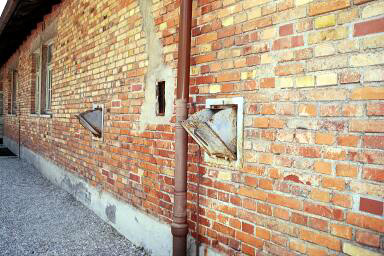 Outer wall of the gas chamber with the two drawers through which Zyklon-B could be poured in. Source: Dachau Scrapbook.
Outer wall of the gas chamber with the two drawers through which Zyklon-B could be poured in. Source: Dachau Scrapbook.Death transports
July 6, 1944, a first death transport arrived in Dachau from the Polizeihaftlager (police detention camp) in Compiègne, France. Out of the 2,521 prisoners in this transport, 964 had already died. This was the start of things to come as from the beginning of 1945 until April of that year, numerous death transports from concentration camps in the east arrived in Dachau. These camps were being evacuated in order to prevent inmates from falling into Soviet hands. Should this happen, they would be able to report in detail about the elimination of Jews in the extermination camps. What followed next was a massive influx of prisoners in concentration camps within the German borders: some inmates arrived by train, others were marched to their new destination in dire circumstances. Edmond Michelet, a French inmate of Dachau, wrote this about the arrival of a death march in the camp: "It is obvious these skeletons only have a few days to live. Their emaciated skin is no more than a grey wrapping, stretched over their bones. The people relieve themselves apathetically, right under our noses. If they still have the energy to produce any sound, their mumbo jumbo is unintelligible."
In November 1944, a new typhus epidemic broke out in the camp and owing to the massive influx of thousands of evacuated prisoners in 1945, living conditions deteriorated ever faster. Barracks designed for 200 prisoners were packed with 1,600. Some 100 to 200 inmates died everyday from typhus. The former camp commander, Martin Weiß had temporarily returned to the camp to put things in order. In March 1945, a number of clergyman had the good fortune to be released; why 170 others remained behind is not clear. Danish and Norwegian prisoners were also released from the camp and handed over to the International Red Cross. For many prisoners, the end of their suffering was not yet in sight. April 14, 1945, Heinrich Himmler ordered the commanders of Dachau and Flossenburg by radiotelegram to evacuate their entire camp. Prisoners were to be transferred to Tirol where they were temporarily out of reach of Allied troops.
The first inmates who were evacuated to Tirol were prominent prisoners including preacher Martin Niemöller, foreman of the Bekennende Kirche and an outspoken critic of the Nazi regime. This transport took place on April 17 or 24, 1945. Two other well known prisoners, French Charles Delestraint, general and resistance fighter and Georg Elser, responsible for the failed attempt on Hitler on November 8, 1939 were executed on April 9. On April 22, Arbeitskommandos left the camp to work for the last time. Next day, 2,000 prisoners were put on a train to the south; they were liberated on May 4. Similar transports took place on April 25, 26 and 27, not only by train but also on foot. Many died during these evacuations and in the camp a large number of the remaining prisoners died as well. Some were shot by their guards, others died of starvation, exhaustion or illness. With the liberation looming, the last camp commander of Dachau, Eduard Weiter committed suicide on April 27 at Itter Castle, a satellite camp of Dachau in Tirol.
Definitielijst
- Dachau
- City in the German state of Bavaria where the Nazis established their first concentration camp.
- International Red Cross
- Name of a complex of co-operating humanitarian organisations which primarily focusses on providing assistance to the sick and wounded military during wartime, to prisoner of war and to civilians during wartime and other conflicts. The role of the Red Cross during World War 2 is somewhat controversial.
- Jews
- Middle Eastern people with own religion that lived in Palestine. They distinguished themselves by their strong monotheism and the strict observance of the Law and tradition. During World War 2 the Jewish people were ruthlessly persecuted and annihilated by the German Nazis. . An estimated 6,000,000 Jews were exterminated.
- Nazi
- Abbreviation of a national socialist.
- resistance
- Resistance against the enemy. Often also with armed resources.
Images
Liberation
In the days before the liberation, an unusual anarchy prevaled in the camp. April 27, many inmates did not appear at roll call. The employees were busily erasing traces by burning the administration. In order to make a more benevolent impression at the last moment, some guards were conspicuously generous in distributing food rations and were friendly towards their prisoners. Despite the better treatment by guards in the last days of Dachau, living conditions in the camp remained deplorable. The camp was still overcrowded: during the last roll call on April 26, 30,442 inmates were counted; another 37,223 inmates remained in the Außenlager of the camp. The major part of the inmates was not German and some 30% was Jewish. And still, prisoners from other camps arrived in Dachau, including the survivors of a trainload from Buchenwald. This transport had left April 7 and arrived in Dachau after a journey full of deprivations. In open cars, the bodies of 2,310 inmates who had not survived the journey were left behind. This train of death was the first object, the liberators of the camp were to encounter.
Along with some other employees of Dachau, camp commander Martin Weiß and his adjutant Rudolph Heinrich Suttrop had fled in the night of April 28. Despite being disguised as civilians, they were spotted by two inmates who had fled from the camp before. The prisoners made contact with soldiers of the 292nd Field Artillery Observation Battalion in Munich and the group Weiß was subsequently arrested. Notwithstanding most employees had left the camp, the inmates were still guarded. If the prisoners would have been left to their own devices, they might, in the absence of their tormentors, have taken revenge on civilians in the town of Dachau. The guards probably consisted of a hodge podge of soldiers of the Waffen-SS who were billeted in the SS barracks adjacent to the camp. They were no longer present in the camp itself but manned the watchtowers with machineguns and so prevented a massive outbreak of prisoners. Order in the camp was upheld by inmates who had set up an international committee.
Actually it had not been intended that prisoners should fall into Allied hands alive. After Buchenwald had been liberated, Hitler ordered Himmler not to let a single concentration camp fall into Allied hands. It was considered to bomb the camps but the Luftwaffe was no longer capable to carry out such an operation. Subsequently Himmler ordered that no prisoner should fall into Allied hands alive. After the war, a camp guard declared that it was intended to execute all prisoners in the night of April 28 to 29 and subsequently set fire to the camp. Fate decided otherwise however as the camp had been liberated by then. In the night the inmates of Dachau should have been killed, Adolf Hitler and his wife Eva Braun committed suicide. Not only the end of suffering for the inmates in Dachau was in sight, the Second World War and the Third Reich would also come to an end within a couple of days.
Shortly before the liberation of Dachau on April 28, a revolt took place. Inhabitants of the town and escaped prisoners occupied the Dachau town hall in order to achieve a non-violent surrender of the town to the Americans. The same day, guards in Dachau took down the Nazi flag and hoisted white flags.
Dachau was liberated on April 29, 1945 by the American 7th Army, the last large camp that was liberated. At that moment the camp contained 32,335 inmates. Both the 42nd Infantry "Rainbow" Division commanded by Brigadier-general Henning Linden and the 45th Infantry "Thunderbird" Division commanded by Lieutenant Colonel Felix Sparks were involved in the liberation of the camp. Both divisions enjoyed armored support by the 20th Armored Division which was on its way to Munich. Up until today, there is disagreement whether the 42nd or the 45th Infantry was the first to enter the camp and be designated the official liberator of Dachau. The problem regarding this question is that men of the 45th Infantry Division were actually the first to reach the Dachau complex but the Übungslager and the SS barracks were sited adjacent to the camp. This complex had three entrances and had to be entered first before entering the concentration camp itself. The camp itself was probably reached by a soldier of the 42nd. Nowadays there is a memorial tablet in the camp in honor of the liberation by the 42nd Infantry Division. The 45th Infantry Division has also been approached for such a tablet but it refused. On the wall across from the tablet is another one in honor of the 20th Armored Division.
The conditions the Americans encountered in the camp were horrendous. Not only in the train of death an enormous number of corpses was found but also dispersed through the camp and in and around the crematory, huge numbers of emaciated corpses were laying about in various stages of decomposition. Probably out of revenge for what was discovered, the Americans caused a blood bath in Dachau. Numerous camp guards were executed and others were probably maltreated and murdered by revengeful prisoners.
Definitielijst
- anarchy
- The idea of a society without authority, power or violence. It is a philosophy based on the idea that an individual can in no way be subordinate to anything or anyone else. Nowadays the term anarchy is mainly used to designate chaos and disorder. However, the concept of anarchy is much more widely used.
- concentration camp
- Closed camp where people are being held captive that are considered to be anti- social, enemies of the state, criminal or unwanted individuals. These groups mostly do not get a fair trial or are condemned to doing time in a camp.
- Dachau
- City in the German state of Bavaria where the Nazis established their first concentration camp.
- Infantry
- Foot soldiers of a given army.
- Luftwaffe
- German air force.
- Nazi
- Abbreviation of a national socialist.
- Waffen-SS
- Name of Military section of the SS.
Images
After the war
In the days after the liberation of camp Dachau, the Americans attempted to save the lives of sick and seriously weakened inmates. In order to fight the typhoid epidemic and restore hygiene in the camp, the corpses were buried and the camp was thoroughly cleaned up. The homeless and sick prisoners were dressed in new clothes from the SS Bekleidungslager (clothing depot) and housed in the barracks of the SS. Some 4,000 received medical treatment and the mortality rate dropped significantly but despite the efforts of the physicians following the liberation of the camp, another 2,466 prisoners died, mainly from typhoid. The camp served as a reception camp for the homeless for a while but eventually, everyone was being prepared for repatriation and the camp received new inhabitants.
In July 1945, the American authorities designated the former concentration camp a detention camp for Germans who had been charged with war crimes. The camp had a housing capacity of 30,000 inmates and from November 15 onwards, trials were held by an American military tribunal. Defendants during the first trial were former camp commander Martin Weiß and 39 other employees of the camp, among them Dr. Klaus Schilling and four Kapo’s – prisoners who were deployed to guard fellow prisoners. Over a very short period – the trial ended as early as December 13 – 170 witnesses were heard and mainly based on their testimony, 36 defendants were sentenced to death. Eventually, 23 of them, including Weiß and Schilling were actually executed in the prison of Landsberg am Lech in May 1946.
Following the trial against employees of camp Dachau, 118 others were also tried for war crimes in the former camp complex. For instance, a trial was held against employees of Buchenwald, including the notorious Ilse Koch, wife of the camp commander who was indicted for having produced lamp shades using the skins of prisoners.
The trial against 73 members of the Waffen-SS who were indicted for complicity in the blood bath of Malmédy – the execution of 86 American soldiers on December 17, 1944 near Baugnez in the Belgian Ardennes, was held in Dachau as well. Defendants included SS-Standartenführer Joachim Peiper, commander of Kampfgruppe Peiper to which most of these Waffen-SS men belonged and SS-Obergruppenführer Joseph Dietrich, commander of the 6.SS-Panzer-Armee Kampfgruppe Peiper was part of.
Joachim Peiper and 41 other defendants were sentenced to death, 22 including Joseph Dietrich were sentenced to life, the other defendants received sentences of 20, 15 or 10 years. None of the death sentences were actually executed. Following an investigation by a committee of the American Senate, all convicts were released from imprisonment between 1948 and 1956. These sentences were reversed because the defendants had probably been forced to testify by unacceptable means and also because the defendants had probably not been treated according to the Geneva Convention by their guards and because of other discrepancies in the course of this trial, the decision to release them was reached. Peiper was the last to be set free. As the Americans failed to hold a fair trial, a controversy arose, just as in regard to the blood bath that was caused in Dachau by the American liberators. Up until today, there is great difference of opinion regarding the sequence of events during the blood bath at Baugnez. The total arbitrariness of the American prosecutors – under pressure from a revengeful home front – to take members of Kampfgruppe Peiper to court and the unfair execution of the trial is a reason for revisionists to question the entire Allied post war jurisdiction.
In September 1948, the concentration camp was handed over the Bavarian authorities. Subsequently, the camp was used as a refugee camp for a long time. The SS barracks remained in use by the American army and were used later on as police barracks by the Bavarian authorities. In 1960, a provisional museum was established in the crematorium building and five years on, the camp was declared a Gedenkstätte (memorial site). Simultaneously, a new museum was opened. At present, the concentration camp is still open to the public. A large part of the camp, including the Jourhouse, the watchtowers and the crematory are still to been seen in their original state. The old barracks have disappeared but two have been reconstructed to give an impression of the past. The old main building houses a museum with a permanent exposition and a movie theatre. In front of the utility building on the former parade grounds, the International Dachau monument can be found, designed by the Yugoslav Glid Nador. Gedenkstätte Dachau is open daily except Monday from 09:00 to 17:00 (09:00 a.m. – 05:00 p.m.). Entry is free.
50 years after the liberation of the camp, the National Dachau Monument, designed by Dutch artisan Niek Kemps, was unveiled in the Amsterdam Forest in the Netherlands. The monument consists of a road, 65 yards long paved with Belgian bleu stones and bordered on both sides by a tightly clipped yew hedge. This monument is a symbol of the Lagerstraße (camp road) in camp Dachau which is lined with tall poplar trees. The walkway is slightly elevated in the middle, in memory of the trouble inmates of camp Dachau had with walking because of the uneven road surfaces and because they wore inferior shoes. The names of 500 concentration camps are engraved in the pavement. A memorial service takes place here every year on April 29, the liberation day of the camp. Fortunately, the victims of camp Dachau have not been forgotten yet.
Definitielijst
- concentration camp
- Closed camp where people are being held captive that are considered to be anti- social, enemies of the state, criminal or unwanted individuals. These groups mostly do not get a fair trial or are condemned to doing time in a camp.
- Dachau
- City in the German state of Bavaria where the Nazis established their first concentration camp.
- Kampfgruppe
- Temporary military formation in the German army, composed of various units such as armoured division, infantry, artillery, anti-tank units and sometimes engineers, with a special assignment on the battlefield. These Kampfgruppen were usually named after the commander.
- Kapo
- A Kapo was a prisoner in a concentration camp in Nazi Germany during World War 2 who was assigned to supervise other prisoners. A Kapo had to supervise the work of the prisoners and was responsible for their results on behalf of the SS.
- Waffen-SS
- Name of Military section of the SS.
- war crimes
- Crimes committed in wartime. Often concerning crimes committed by soldiers against civilians.
Images
Prisoners
According to official camp records, a total of 206,206 people have been imprisoned in camp Dachau between 1933 and 1945. In order to get a good idea of the various groups of prisoners, it is important to know camp Dachau was not established to contribute to the "Endlösung der Judenfrage," the extermination of the European Jews. In camp Dachau, there were no Jewish women, children and elderly destined to be killed and even Jewish men did not constitute the most prominent group of prisoners. From the day the camp was opened the camp was meant for political prisoners in particular and remained that way until the end of the war. Before the war, these were mainly members of the socialist and Communist party but during the war, the large group of political prisoners also consisted of non-Germans who had resisted the German occupier in their country. In addition to political prisoners, there were also homosexuals, criminals and other groups of people, branded by the Nazi as undesired, in the camp.
In camp Dachau, 2,771 clergy men have been imprisoned, including 2,579 Roman-Catholic priests and seminaries from 38 countries, 109 Protestant preachers, 30 orthodox clergymen and two imams. 1,034 of them perished. Female prisoners have never been in camp Dachau, only in one of the Außenlager of the camp. Only in the last month of the war, women were sent to camp Dachau in death marches or by train but many of them did not reach the camp alive. Among the prisoners in camp Dachau were many prominent figures of various nationalities. Some of them were already well known before the war by their political role for instance, others became known by their resistance activities during or after the war.
A well known politician who has been imprisoned in camp Dachau is Kurt Schumacher, the leader of the SPD (Sozialdemokratische Partei Deutschlands or German Socialdemocratic Party) in the early years of the Federal Republic of Germany. As he had been active for the SPD, for instance as a member of the Reichstag for the SPD prior to the war, he was arrested in July 1933 and spent the next 10 years in various concentration camps, among them camp Dachau. In the years after the war, Schumacher was a formidable opponent of Konrad Adenauer, the leader of the newly established CDU (Christlich-Demokratische Union or Christian Democratic Union). Although Schumacher was convinced he would become the first chancellor of the Federal Republic of Germany, he lost the elections of 1949. After the appointment of Adenauer as chancellor, Schumacher was disappointed but he remained chairman on behalf of the CDU in the Bundestag until his sudden death in 1952.
Dachau-prisoner preacher Martin Niemöller grew into the icon of ecclesiastic resistance against the Nazis in Germany. His resistance began when the Arierparagraph was issued. It stipulated that anyone of non-Arian descent, or married to someone of non-Arian descent was no longer allowed to hold a function in the church. This meant Christians of Jewish descent, to whom this concerned would lose their jobs. Niemöller protested against this kind of Nazification and founded the Notpfarrerbund, an emergency union of preachers. During a meeting with Niemöller in 1934, Hitler had said: "You confine yourself to the church; I take care of the German population." Niemöller responded:
- Dear Chancellor,
"You just said: I take care of the German population but we, as Christians and clergy men, have a responsibility towards the German population as well. This responsibility has been invested in us by God and neither you nor anyone else in the world has the authority to take that away from us."
In the year he met Hitler, Niemöller founded the Bekennende Kirche: an anti-Nazi ecclesiastic resistance movement of German Protestants. Meanwhile, he was being closely watched by the Gestapo and after he had vehemently criticized Hitler in a sermon, he was arrested. Hitler himself named Niemöller his personal prisoner. Initially, Niemöller remained in Sachsenhausen and from 1941 onwards he was imprisoned in camp Dachau. He survived the camp and remained active in the Protestant church after the war.
Georg Elser who made the failed attempt on Hitler, had been imprisoned in Sachsenhausen as Sonderhäftling (special prisoner), awaiting a kangaroo trial after the war. Towards the end of 1944, beginning of 1945, he was transferred to Dachau and he was executed on April 9, 1945 on personal order from Heinrich Himmler.
As he had served in the Belgian army in May 1940 and subsequently had played an important role in the French Maquis, Xavier de Bourbon-Parma was imprisoned in Dachau as well. He was the Duke of Parma and Carlistic pretender to the throne. In the camp he refused VIP treatment. He survived Dachau and declared himself King of Spain in 1952. In 1969 he was sidetracked by Franco when he designated Juan Carlos as successor. In the Netherlands, Xavier de Bourbon-Parma was best known as the father of Carlos Hugo de Bourbon-Parma, former husband of Princess Irene.
The Frisian Carmelite pastor Titus Brandsma did not survive his stay in Dachau. After he had been in custody in Scheveningen, Amersfoort and Cleve he died in Dachau on July 26, 1942. He had been arrested for having incited the Dutch through the Roman-Catholic newspapers to resistance against the Nazis. After the war he was beatified by Pope John Paul II in 1985. Just like Niemöller in Germany, Brandsma grew into an icon of ecclesiastic resistance in the Netherlands.
Just like Titus Brandsma, George Maduro also passed away in Dachau. He was born in Willemstad, Curaçao and was Jewish. Prior to the outbreak of war, he studied in the Netherlands. In May 1940, he served as 2nd Lieutenant, reserve, in the Dutch army. He commanded one of the counter attacks against the occupation of air base Ypenburg on May 10, 1940. After the capitulation of the Dutch army, he was made a prisoner-of-war. After a short period in freedom, he was imprisoned again in Scheveningen. When he was released six months later, Jews were meanwhile obliged to wear a yellow Star of David. Maduro refused and joined the resistance.
In 1943, Maduro helped Allied pilots escape to the United Kingdom via Spain. He was betrayed and imprisoned. He managed to escape and rejoined the resistance. He was arrested again and eventually ended up in Dachau. He died there, February 9, 1945 from typhus. He was posthumously awarded the MWO 4 for having led an attack on a German strongpoint near Huize Dorrepaal (the former villa Leeuwenbergh) in Rijswijk in May 1940. He is the only Antillian to have received this award. After the war, Maduro’s parents donated a start capital for the establishment of a miniature city in The Hague. This miniature city, Madurodam was opened to the public in 1952. Since 1993, a scale model of the house Maduro was born in, is on display at the entrance of Madurodam. A tablet near the miniature house reads: "In him, the Netherlands honor its war heroes in the struggle 1940-1945.
A well known Belgian prisoner was Albert Guérisse, better known by his alias Patrick O’Leary. At the outbreak of war, he served as a medical officer in a Belgian cavalry regiment. After the capitulation of Belgium, he escaped to Great Britain via Dunkirque where he entered service in the Royal Navy. During a mission in April 1941, his vessel ferried S.O.E. agents to the Belgian coast. When Guérisse wanted to return, his vessel had turned about meanwhile and he was obliged to swim back to the coast. He was arrested by the Vichy-French coast guard and imprisoned in Fortress Hippolyte near Nîmes. Here he met S.O.E. agent Ian Garrow. They managed to escape and Guérisse helped Garrow set up an escape network.
Garrow was arrested by the Vichy-French authorities in October 1941 and Guérisse took over his duties. He smuggled a German uniform into Garrow’s cell, enabling him to escape. While Garrow was recalled to Great Britain, Guérisse continued his work regarding escape routes. His escape network eventually guided 600 escapees to Spain and subsequently to Great Britain. In 1943, the network was dismantled and Guérisse arrested. During his detention in various concentration camps, he was frequently interrogated by the Gestapo but he did not say anything. He eventually ended up in Dachau where he should have been murdered actually. Fortunately things did not get that far and as leader of the International Committee he lived to see the liberation of the camp. After the war, he rejoined the Belgian army. He was awarded the George Cross and various other national and international decorations. He ultimately managed to attain the rank of Major-general and chief of the medical department of the Belgian army. Guérisse passed away March 26, 1989.
Each inmate of Dachau had his own story. Of the 206,206 prisoners on record, 31,591 were no longer able to tell their story. They were among the officially recorded dead victims of concentration camp Dachau. These men and the unknown number of victims not recorded are commemorated each year on April 29. "May the example of those who gave their lives here between 1933 and 1945 as a result of their opposition to Nazism unite the living in their struggle in defense of peace and safety and the respect for human dignity," as can be read on the International Dachau monument in KZ-Gedenkstätte Dachau.
Definitielijst
- capitulation
- Agreement between fighting parties concerning the surrender of a country or an army.
- cavalry
- Originally the designation for mounted troops. During World War 2 the term was used for armoured units. Main tasks are reconnaissance, attack and support of infantry.
- concentration camp
- Closed camp where people are being held captive that are considered to be anti- social, enemies of the state, criminal or unwanted individuals. These groups mostly do not get a fair trial or are condemned to doing time in a camp.
- Dachau
- City in the German state of Bavaria where the Nazis established their first concentration camp.
- Endlösung
- Euphemistic term for the final solution the Nazis had in store for the “Jewish problem”. Eventually the Endlösung would get the form of annihilating the entire Jewish people in extermination camps.
- Jews
- Middle Eastern people with own religion that lived in Palestine. They distinguished themselves by their strong monotheism and the strict observance of the Law and tradition. During World War 2 the Jewish people were ruthlessly persecuted and annihilated by the German Nazis. . An estimated 6,000,000 Jews were exterminated.
- Maquis
- French underground resistants’ movement during World War Two.
- Nazi
- Abbreviation of a national socialist.
- Nazism
- Abbreviation of national socialism.
- regiment
- Part of a division. A division divided into a number of regiments. In the army traditionally the name of the major organised unit of one type of weapon.
- resistance
- Resistance against the enemy. Often also with armed resources.
Images
Information
- Article by:
- Kevin Prenger
- Translated by:
- Arnold Palthe
- Published on:
- 17-08-2017
- Last edit on:
- 10-04-2021
- Feedback?
- Send it!
Related themes
Related sights
Related persons
Related books
Sources
- KERSHAW, I., Hitler - Hoogmoed 1889-1936, Het Spectrum, Utrecht, 2003.
- KERSHAW, I., Hitler - Vergelding 1936-1945, Het Spectrum, Utrecht, 2003.
- KNOPP, G., Hitlers Holocaust, Byblos, Amsterdam, 2001.
- KNOPP, G., Hitlers moordenaars, Het Spectrum, Utrecht, 2004.
- MACLEAN, F., The Camp Men, Schiffer Military History, Atglen (USA), 1999.
- SNYDER, L., Encyclopedia of the Third Reich, Wordsworth, Hertfordshire (UK), 1998.
- SPECTOR, S. & ROZETT, R., Encyclopedie van de Holocaust, Kok, Kampen, 2004.
- TEUNISSEN, J., Mijn belevenissen in de Duitse concentratiekampen, Kok, Kampen, 2002.
- THOMPSON, J., De Bevrijding, Kosmos Z&K, Utrecht/Antwerpen, 2005.
- TISSIER, T. LE, The Third Reich, After the Battle, 2005.
- Bayerische Landeszentrale
- Concentratiekamp Dachau
- Dachau Scrapbook
- DHM - KZ Dachau
- Holocaust History – The Dachau Gas Chambers
- KZ-Gedenkstätte Dachau
- United States Holocaust Memorial Museaum
- Wikipedia.de - KZ Dachau
- Wikipedia.org - Concentration Camp Dachau
